
FREE K-12 standards-aligned STEM
curriculum for educators everywhere!
Find more at TeachEngineering.org .
- TeachEngineering
- Space Travel

Lesson Space Travel
Grade Level: 8 (7-9)
Time Required: 15 minutes
Lesson Dependency: None
Subject Areas: Earth and Space, Science and Technology
- Print lesson and its associated curriculum
Curriculum in this Unit Units serve as guides to a particular content or subject area. Nested under units are lessons (in purple) and hands-on activities (in blue). Note that not all lessons and activities will exist under a unit, and instead may exist as "standalone" curriculum.
- Into Space!
- Solar Sails: The Future of Space Travel
- My Moon Colony
- Earth Impact
TE Newsletter
Engineering connection, learning objectives, more curriculum like this, introduction/motivation, associated activities, lesson closure, vocabulary/definitions, user comments & tips.

Space travel is made possible by engineers. From mechanical engineers who design the components for spacecraft to biomedical engineers who design ways to care for astronauts' health while traveling in space, people from almost every discipline of engineering work together to further space exploration.
After this lesson, students should be able to:
- Identify potential reasons why people want to travel to space.
- Describe how different types of engineers each contribute to space travel.
- Give examples of what the future may hold for space travel.
Educational Standards Each TeachEngineering lesson or activity is correlated to one or more K-12 science, technology, engineering or math (STEM) educational standards. All 100,000+ K-12 STEM standards covered in TeachEngineering are collected, maintained and packaged by the Achievement Standards Network (ASN) , a project of D2L (www.achievementstandards.org). In the ASN, standards are hierarchically structured: first by source; e.g. , by state; within source by type; e.g. , science or mathematics; within type by subtype, then by grade, etc .
International technology and engineering educators association - technology.
View aligned curriculum
Do you agree with this alignment? Thanks for your feedback!
State Standards
Colorado - science.
(Note: Prior to beginning this lesson introduction, guide students through a brief pre-lesson assessment activity on journaling, as described in the Assessment section.)
Let us begin by having you share your journal entries on your journey through space. What do you imagine it would be like to travel into space? What questions do you have about the solar system and outer space? (Call on students to share their ideas.) Great ideas and questions! Do you have any idea how long you think a person could live in outer space? What kind of equipment would she or he need to survive? Today we will be studying a space project that many engineers have been working on that makes it possible to travel to and live in space.
But first let's think about why people would want to travel to space in the first place. You wrote in your journal about things you might explore in space. Tell me about your investigation plans. (Call on students to share their ideas. Write ideas on the board.) Good! What are other reasons that space scientists might want to explore outer space? (Ask some of the following questions if students did not already mention these ideas. Write ideas or groups of topics on the board.)
- Evidence of life: "Do you think life exists on other planets? How could we find out?"
- Gravity-free experiments: "Why might scientists be interested in performing experiments in a gravity-free environment?"
- Earth's origins: "In what ways could the exploration of the moon and our solar system tell us about our own planet's origin?"
- Colonizing other planets: "Do you think we could someday colonize the moon or another planet? Why would we want to? What would we need to figure out to make that possible?"
Excellent! Now we have an idea of why people might like to travel to space. But , who actually makes space travel possible? Engineers are the creative problem solvers who help shape the future of space travel. People from nearly every discipline —or branch of study—of engineering work together to further space exploration. Aerospace engineers design the craft, mechanical engineers design the components for the craft, electrical and computer engineers design the computer systems, and chemical engineers design the rocket fuel, among the many others who have a hand in a spacecraft's launch into outer space. What role do you think biomedical engineers have in space travel? (Answer: they design the medical devices to monitor and keep healthy the traveling astronauts.)
Let's look at an example of a space project that sounds like something out of a science fiction movie, but is actually a real project that engineers from around the world have worked on together to build for our use today! The International Space Station, or ISS for short, is designed to help scientists study questions such as the ones you came up with during your journaling activity. Astronauts—who have trained for months, if not years—live in the ISS for up to about six months at a time! Can you imagine?! While aboard the ISS, astronauts perform experiments that can only be done in space. Also, another purpose during their stay is to discover what is necessary to live in space for an extended period of time, so that longer journeys into the solar system can be planned (and carried out), such as to Mars or beyond.
The ISS is slightly bigger than a football field, and the living area for the 3-6 on-board astronauts is about the size of an average three-bedroom house (see Figure 2). How do you think life might be different for the astronauts who live there, based on the fact that they are in space and in such confined quarters? (This might be a good time to visit NASA's Interactive Space Station Reference Guide at https://www.nasa.gov/mission_pages/station/multimedia/index.html , which provides detailed visual answers to this question, as well as video clips showing how astronauts eat, sleep and exercise while on board the ISS.)
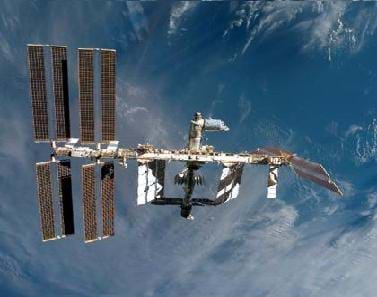
The ISS is not only an adventure in space living, it is also an adventure in science and engineering. The ISS is one of the most complex engineering projects ever designed. Engineers had to solve many difficult problems, such as how to get such a massive object to orbit the Earth, how to design ways to get astronauts on and off the space station, and how to provide electrical power to the station. Following the lesson students can expand their knowledge by combining design and creative thinking with the associated activity Solar Sails: The Future of Space Travel in which they will design, construct and test model solar sails made of foil that move cardboard tube satellites on a string through “space,” as a way to learn about new innovations, the universal laws of motion, and the transfer of energy from wave to mechanical energy.
Lesson Background and Concepts for Teachers
What is the International Space Station?
The International Space Station , or ISS for short, began in-space assembly in 1998 and is still under construction (as of fall 2008, at the time of this writing). The largest international space research station in history, sixteen countries including the U.S., Russia, Canada, Japan and Brazil joined together to conduct science experiments and research in space to determine whether human beings have a future in space. Research topics include life in low gravity, physics, Earth observation.
The ISS is about 25% larger than a football field and weighs more than one million pounds. Orbiting 240 miles above Earth and traveling at a speed of about 28,000 kilometers an hour, the ISS circles the Earth about 16 times a day. The station is able to observe 85% of the planet and 95% of the Earth's population from its variable and frequent orbit. Although small, the living quarters give the crew a great view of space and the Earth.
Crew and supplies can access the station during NASA's scheduled missions to replenish needed items (food, research supplies, etc.), accept visitors and exchange astronauts who are living in the space station. Electricity is provided by almost an acre of solar panels. NASA provides an excellent online tour of the ISS via the Interactive Space Station Reference Guide ( https://www.nasa.gov/mission_pages/station/main/index.html ).
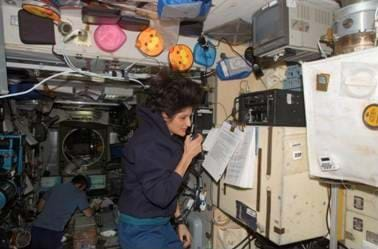
History of Space Travel
The earliest rockets were similar to current day fireworks and used in 1232 during the war between the Chinese and Mongols. These firework-like missiles were a simple solid-propellant rocket. Using gunpowder stuffed into a tube that was capped only at one end, the rocket could be ignited. The rapid burning of the powder produced gas that escaped through the open end, producing thrust. The stick that the rocket was attached to acted as a simple guidance system. Refer to the associated activity Into Space! to give students an introductory learning of basic physics concepts on how rockets work as they design, build and test model rockets using camera film canisters and antacid tablets.
Manned Spacecraft
Space travel for human beings did not develop until several centuries later when, in 1961, Russian Yuri Gagarin became the first person to orbit the Earth. The next major milestone in space travel came in 1969 when the three-man Apollo 11 mission landed on the moon — resulting in the first humans who walked on the moon!
Soon after the Russians and Americans sent people into space, engineers also started working on spacecraft that would house astronauts for longer periods so that they could plan for extended trips and perform scientific experiments. These predecessors to the International Space Station include the Apollo-Soyuz, the first international spacecraft; Skylab, the first American craft for long-term use, and Mir, the Russian space station that held international scientists during 1986 to 1996.
Unmanned Spacecraft
Unmanned spacecraft are an integral part of the discovery of our solar system and beyond. Some satellites observe the Sun, solar system, and/or the universe (such as the Hubble telescope or Viking, the Mars probe), and other satellites observe our planet from above (for weather forecasting, etc.). Still other satellites observe and sample specific environments or are used solely for the purpose of benefiting humanity (like GPS and communication).
Watch this activity on YouTube
Space travel can help us learn about the origins of the universe and our own planet. Also, it provides a unique opportunity to do research in a gravity-free environment, which is a great advance toward our knowledge of space and space-related issues. Engineers help make space travel possible by working together to solve a wide range of design problems. Someday they may even find a way to help us travel to other planets, or perhaps even live among the stars!
chemical reaction: A process whereby one type of substance is chemically converted to another substance involving an exchange of energy.
gravity: The natural force of attraction between any two massive bodies.
rocket: A vehicle that moves by ejecting fuel.
star: A huge burning sphere of gas, made up of roughly 90% hydrogen and 10% helium.
thrust: The forward-directed force on a rocket in reaction to the ejection of fuel.
Pre-Lesson Assessment
Journaling : Have students take out a sheet of paper. Explain that they will be writing in their journals for three minutes on a topic you will provide. They should not worry about the quality of their writing (organization, grammar or spelling), but should simply try to get their thoughts down. They should write nonstop for the full three minutes. Topic: Imagine that you are planning a trip through our solar system. What do you imagine you will see and feel as you travel through space? What kinds of things might you explore? What questions do you have about your upcoming journey or about the solar system or outer space in general? (You may want to write the topic questions on the board, under a pulled-down projector screen, in advance of class.)
Post-Introduction Assessment
Discussion Topic : International Space Station astronauts set up a program that enables them to talk to students around the world. Think of a few questions that you would ask an ISS astronaut, given the chance. In particular, think about questions concerning why people go to space and what the future of space travel holds. Give students a few minutes to write down their responses, and then have them share them with the class.
Lesson Summary Assessment
Acrostic Poem : Encourage students to synthesize and evaluate their learning by having them write an acrostic poem. Instructions : To make an acrostic poem, write the words space travel vertically on a piece of paper. Then, use each letter in those words as the first letter of a different word or phrase related to space travel. For example, S = scientific experiments, P = probing the universe, A = aerospace engineers, etc.)
Lesson Extension Activities
Learn more about the shuttle and its role in building and transporting crew to and from the ISS. Have students research various aspects of this topic and present their findings to the class.
Have students build a scale model of the International Space Station using scaled drawing templates from NASA; see: http://www.nasa.gov/mission_pages/station/multimedia/scalemodel/.
Have students research how the ISS is built, and what it would be like to live on it, using NASA's Interactive Space Station Reference Guide at: http://www.nasa.gov/externalflash/ISSRG/. Present their research to the class.
Ask students to consider how scientists and engineers made the International Space Station successfully orbit the Earth. Discuss factors that could influence its ability to orbit. Then have students try to create their own orbiting satellite using the online simulation "My Solar System" at: http://phet.colorado.edu/en/simulation/my-solar-system.
Build a scale model of objects in the solar system, with help from a NASA website at: http://solarscience.msfc.nasa.gov/papers/hathadh/SolarSystemModel.pdf. If any other students/group is creating a scale model of the ISS, work in tandem to demonstrate for other students what the ISS looks like traveling through space.

Students acquire a basic understanding of the science and engineering of space travel as well as a brief history of space exploration. They learn about the scientists and engineers who made space travel possible and briefly examine some famous space missions.

Students are introduced to the International Space Station (ISS) with information about its structure, operation and key experiments.

Students learn about the physical properties of the Moon. They compare these to the properties of the Earth to determine how life would be different for people living on the Moon.

The purpose of this lesson is to teach students how a spacecraft gets from the surface of the Earth to Mars. Students first investigate rockets and how they are able to get us into space. Finally, the nature of an orbit is discussed as well as how orbits enable us to get from planet to planet — spec...

Discovery Communications, Discovery Education, Classroom Resources, "Space-Age Living: Building the International Space Station," accessed October 23, 2008, http://school.discoveryeducation.com/schooladventures/spacestation/basics/how.html
Dubson, Michael. University of Colorado, Physics Education Technology, Simulations, "My Solar System," accessed October 23, 2008, http://phet.colorado.edu/en/simulation/my-solar-system
Hathaway, Dr. David H., National Aeronautics and Space Administration, "Scale Model of the Solar System," June 1998, accessed October 23, 2008, http://solarscience.msfc.nasa.gov/papers/hathadh/SolarSystemModel.pdf
National Aeronautics and Space Administration, United Space Alliance and The Boeing Company, Online Shuttle Press Kit, The International Space Station, June 3, 1999, accessed October 23, 2008, http://www.nasa.gov/news/media/presskits/index.html
National Aeronautics and Space Administration, accessed October 23, 2008, http://spaceflight.nasa.gov/station/
National Aeronautics and Space Administration, accessed October 23, 2008, http://spaceflight.nasa.gov/history/
National Aeronautics and Space Administration, International Space Station, An Interactive Reference Guide, accessed October 23, 2008. https://www.spaceflight.nasa.gov/station/reference/index.html
National Aeronautics and Space Administration, International Space Station, Multimedia, "Scale Model Drawing Package," August 15, 2008, accessed October 23, 2008, http://www.nasa.gov/mission_pages/station/multimedia/scalemodel/index.html
Space Station, "Current Missions," October 23, 2008, accessed October 23, 2008, http://www.nasa.gov/mission_pages/station/main/index.html
Newman, Phil. National Aeronautics and Space Administration, StarChild, "The Solar System," accessed October 14, 2008. http://starchild.gsfc.nasa.gov/docs/StarChild/solar_system_level2/solar_system.html
Contributors
Supporting program, acknowledgements.
The contents of these digital library curricula were developed by the Integrated Teaching and Learning Program under National Science Foundation GK-12 grant no. 0338326. However, these contents do not necessarily represent the policies of the National Science Foundation, and you should not assume endorsement by the federal government.
Last modified: March 10, 2021

Space Travel
“All civilizations become either spacefaring or extinct.” Carl Sagan (1934 – 1996), American cosmologist and planetary scientist
- December 7, 2020
- General English
- No Comments
Home » Space Travel
Latest lesson plans

LESSON OVERVIEW
This free ESL lesson plan on space travel has been designed for adults and young adults at an intermediate (B1/B2) to advanced (C1/C2) level and should last around 45 to 60 minutes for one student.
In 1961, the human race ventured into space for the first time when Yuri Gagarin completed an orbit of Earth. Eight years later, in 1969, the first humans landed on the Moon and since then, we have gone no further. Today, many important scientists have warned that if we do not find another planet to live on in the future, humanity faces the risk of extinction due to global warming, the threat of nuclear war or artificial intelligence. Plans are afoot to visit Mars in the coming years, but it is unlikely that the Red Planet could be a viable home, meaning we will have to look further afield, probably in another solar system, to find a new home. In this ESL lesson plan on space travel, students will have the opportunity to discuss and express their opinions on issues such as whether they would like to travel in space, why we might need to colonise other planets and how we might achieve this.
This lesson plan could also be used with your students to debate these issues for the International Day of Human Space Flight , which takes place in April, or for World Space Week , which takes place in October. For more lesson plans on international days and important holidays, see the calendar of world days to plan your classes for these special occasions.
For advice on how to use this English lesson plan and other lesson plans on this site, see the guide for ESL teachers .
PRE-CLASS ACTIVITIES
Reading activity Before the English class, send the following article to the students and ask them to read it while making a list of any new vocabulary or phrases they find (explain any the students don’t understand in the class):
TOR | “Science vs. The Expanse : Is It Possible to Colonize Our Solar System?”
The article refers to the popular sci-fi TV show The Expanse , which shows a future in which humans have colonised various places in the solar system including the Moon, Mars and Ceres, and asks whether or not this is a realistic future for humans. At the start of the class, hold a brief discussion about what the students thought about the article. Do they agree with what was written in the article? Did they read anything they disagree with?
Video activity To save time in class for the conversation activities, the English teacher can ask the students to watch the video below and answer the listening questions in Section 3 of the lesson plan at home. There are intermediate listening questions and advanced listening questions so teachers can decide which would be more appropriate for their students. Check the answers in the class.
The video for this class is called “Could We Actually Live On Mars?” by TED Ed and explores the possibility of colonising Mars and the challenges this would entail.
IN-CLASS ACTIVITIES
The focus in the class is on conversation in order to help improve students’ fluency and confidence when speaking in English as well as boosting their vocabulary.
This lesson opens with a short discussion about the article the students read before the class. Next, the students can give their opinion on the quote at the beginning of the lesson plan – what they think the quote means and if they agree with it. This is followed by an initial discussion on the topic including how the students think it would be to travel in Space, the prospects of turning the Moon into a holiday resort and what TV shows or filsm the students have seen that involves space travel.
After this, students will learn some vocabulary connected with space travel such as terraform , space tourism and wormhole . This vocabulary has been chosen to boost the students’ knowledge of less common vocabulary that could be useful for preparing for English exams like IELTS or TOEFL. The vocabulary is accompanied by a cloze activity and a speaking activity to test the students’ comprehension of these words.
If the students didn’t watch the video before the class, they can watch it after the vocabulary section and answer the listening questions. Before checking the answers, ask the students to give a brief summary of the video and what they thought about the content.
Finally, there is a more in-depth conversation about the need for space travel. In this speaking activity, students will talk about issues such as whether or not humans will ever colonise other planets, why humans would want to settle on other planets and the genetic and technological challenges this would present.
After the class, students will write about the colonisation of space. This could be a short paragraph or a longer piece of writing depending on what level the student is at. The writing activity is designed to allow students to practise and improve their grammar with the feedback from their teacher. For students who intend to take an international English exam such as IELTS or TOEFL, there is an alternative essay question to practise their essay-writing skills.
DOWNLOAD LESSON PLANS

Did you find this lesson plan useful?
Your English Pal is a free resource to help fellow ESL teachers save time when preparing their classes. If these lesson plans have helped you, and you’d like to help keep the site free, please consider making a small contribution to help cover the site’s costs. Any help you can give is much appreciated!
Leave a Comment Cancel Reply
Your email address will not be published. Required fields are marked *
Save my name, email, and website in this browser for the next time I comment.
Copyright © 2023 Your English Pal
Privacy Overview

Elementary School Science
Astronauts and Voyages into Space - A Look into Space Exploration

This lesson contains affiliate links to products I have used and personally recommend. At no cost to you, I make a commission for purchases made through the links or advertisements. These commissions help to pay for the costs of the site and enable it to remain free for anyone who wants to use it.
Objectives:
The students will learn about the history of space exploration.
The students will be able to define the terms: astronaut and cosmonaut.
The students will learn the requirements to be an astronaut.
The students will be able to name famous astronauts and explain their contributions to space exploration.
The students will be able to describe notable space explorations in history.
Questions that encompasses the objective:
Think about outer space.
What do you think it would be like to travel into outer space?
Prepare the Learner: Activating Prior Knowledge.
How will students prior knowledge be activated?
Warm up by asking students:
What do you know about space exploration?
Can you name any famous astronauts?
Common Core State Standards:
CCSS.ELA-LITERACY.SL.2.1
CCSS.ELA-LITERACY.SL.2.1 B
CCSS.ELA-LITERACY.SL.2.4
CCSS.ELA-LITERACY.W.2.2
CCSS.ELA-LITERACY.W.3.2
CCSS.ELA-LITERACY.W.3.2 B
CCSS.ELA-LITERACY.SL.3.1
CCSS.ELA-LITERACY.SL.3.4
Materials and Free Resources to Download for this Lesson:
Video: “The Evolution of Space Exploration" by Space Push
"Solar System" Science Journal (Teacher Copy)
“Solar System” Science Journal (Student Copy)
Page 15-16: History of Space Exploration
Pages 17-18: Famous Astronauts
Pages 19-20: “Space Race”
Pages 21-22: Notable Space Explorations
“My Planet” activity materials:
“My Planet” outline
Construction Paper
Crayons/Markers/Colored Pencils
Scissors/Glue
"What I Know About Astronauts and Space Exploration" worksheet
"What I Learned About Astronauts and Space Exploration" worksheet
**When the unit is over, download the final assessment for all of the lessons on space for free.
**Here's the answer key.

Space Lesson Plans: What Makes Up the Solar System?

Space Lesson Plans: How Big Is The Solar System?
Input: What is the most important content in this lesson? To reach this lesson’s objective, students need to understand:
The history of space exploration.
The definitions to the terms: astronaut and cosmonaut.
The names of famous astronauts and their contributions to space exploration.
The dates of notable space explorations.
How will the learning of this content be facilitated?
For the first few minutes, the students will fill out the “What I Know About Astronauts and Space Exploration” worksheet.
The teacher will begin the class by showing the video “The Evolution of Space Exploration” (Source: https://www.youtube.com/watch?v=5y5QU50KA_c) . The video is about two minutes long and talks about how space exploration has evolved over the years. After the video has been presented, the teacher should begin a discussion about the content. The teacher should emphasize how space-crafts have changed over time and how, with the improvement of modern-day technology, new objects in space are being discovered.
After the worksheet is reviewed, the teacher will begin presenting the information on the Solar System. If it is possible, project each page of the teacher’s copy of the “All About the Solar System” Science Journal worksheet onto the board using a projector or put into a PowerPoint document and project. The teacher’s copy of the journal has certain words/phrases that are bolded red and highlighted. It is important the teacher explain to the students those words/phrases are to be highlighted in their (students) journal. For this lesson, the teacher should review these pages:
Pages 15-16: History of Space Exploration
**This page reviews the history of space exploration**
**These pages will review some of the famous astronauts in history**
Pages 19-20: “Space Race”
**This page explains the “Space Race” of the 20th Century between the United States and the Soviet Union (USSR)*
Pages 21-22: Notable Space Explorations
**This page explains some of the most notable space explorations in history**
After the information has been presented, the students will participate in the activity “My Planet”. The students can work individually or in pairs (no more than 2 per group). The teacher should give each student a “My Planet” outline. The students will pretend they are an astronaut who is traveling through space. During his/her travels, they discover a new planet. The students will follow the “My Planet” outline to describe the new planet he/she has discovered. Allow the students about 15-20 minutes to complete the activity.
**Each student/pair can either present their “Planet” or a gallery walk can be set up. For the gallery walk, each pair will place their planet poster on desks throughout the room. The students will walk around and look at their peers’ poster**
After the presentation or gallery walk is over, the students should reconvene and the teacher should discuss the activities. The teacher should review the vocabulary words with the students.
The students will then fill out the “What I Learned About Astronauts and Space Exploration” worksheet.
They will then share with the class, or with a partner, some things they wrote down in their “What I Learned About the Solar System” page.
**The students should keep both of the "What I Know" and "What I Learned" sheets in a folder to put them all together into a book when the unit is finished.**
Time/Application 3-5 minutes Guided Introduction
Review the class/ agenda with the students:
Discussion: Science Journal (Pages 15-22)
Activity: “My Planet ”
Discussion of Activity
Introductory Activity: Video: “Evolution of Space Exploration”
Show the students the video: “The Evolution of Space Exploration" by Space Push
After the video is over, begin a discussion about the content.
History of Space Exploration | Famous Astronauts | “Space Race” | Notable Space Explorations
Instruct the students to open to page 15 in their science journals.
Project each page of the science journal onto the board either through a projector or PowerPoint presentation.
The teacher copy has bolded red and highlighted words. The students will highlight those words in their science journal.
Begin presenting the information. The pages that will be presented include: pages 15-22.
Activity: “My Planet”
The students can either work individually or in pairs.
Give each pair a poster board and crayons/markers/colored pencils.
Instruct the students to pretend they are an astronaut who is traveling through space. During his/her travels, they discover a new planet.
The students will follow the “My Planet” outline to describe and create the new planet he/she has discovered. (This is when they will need the “My Planet” activity materials)
Allow the students to work on their project for about 15-20 minutes.
Reconvene and discuss when the students are finished.
**Each student/ pair can either present their “Planet” or a gallery walk can be set up. For the gallery walk, each pair will place their planet poster on desks throughout the room. The students will walk around and look at their peers’ poster board**
Closure/Assessment 10 minutes
The students will then fill out the "What I Learned About Astronauts and Space Exploration" worksheet. They will then share with the class, or with a partner, some things they wrote down on the page.
Individualized Instruction/Scaffolding
English Language Learners will be supported in this lesson through data-based heterogeneous grouping, verbal and written repetition of new vocabulary words, and multiple representation of vocabulary words through printed images and video.

Space Lesson Plans:
The planets.

Space Lesson Plans: Astronauts & Space Exploration

Space Lesson Plans: Size & Scale of the Planets & Sun

Space Lesson Plans: Earth's Satellite - All About the Moon

Space Lesson Plans: Solar & Lunar Eclipses

Space Lesson Plans: Night Lights - All About the Stars

Space Lesson Plans: All About the Sun

Space Lesson Plans: The Sun - The Center of it All

You Can Cross It Off Your Bucket List After Visiting The Egyptian Pyramids and Great Sphinx With Google Earth Tours : Top Teacher Resources. Take A Look. Only $3.99 on TPT.

What Is It? Who Built It? Aliens or Sorcerers? You Can Visit Stonehenge With Google Earth Tours And Check It Out For Yourself: Top Rated Resources. Only $3.99 on TPT.

Leading Educators Agree, If You Can't Go In Person,Than Machu Picchu With Google Earth Tours Is The Next Best Thing. Go There Now! Only $3.99 on TPT.

Space Lesson Plans: What is Astronomy? A Look At Space

You Can Almost Smell the Stench of Lions & Gladiators When You Travel To The Roman Colosseum With Google Earth Tours . Be A Spectator And Click Now! Only $3.99 on TPT.

Learning Space
Teachable Moments
Stay Connected

Out-of-School Activity
Mission to mars unit.
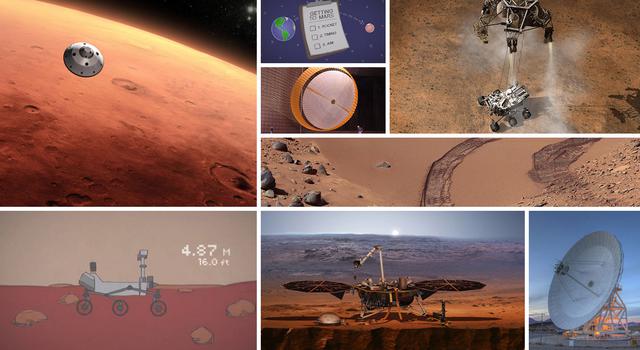
Join the Adventure on Mars!
Get K-12 students exploring Mars with NASA scientists, engineers, and the Perseverance Mars rover as they learn all about STEM and design their very own mission to Mars.
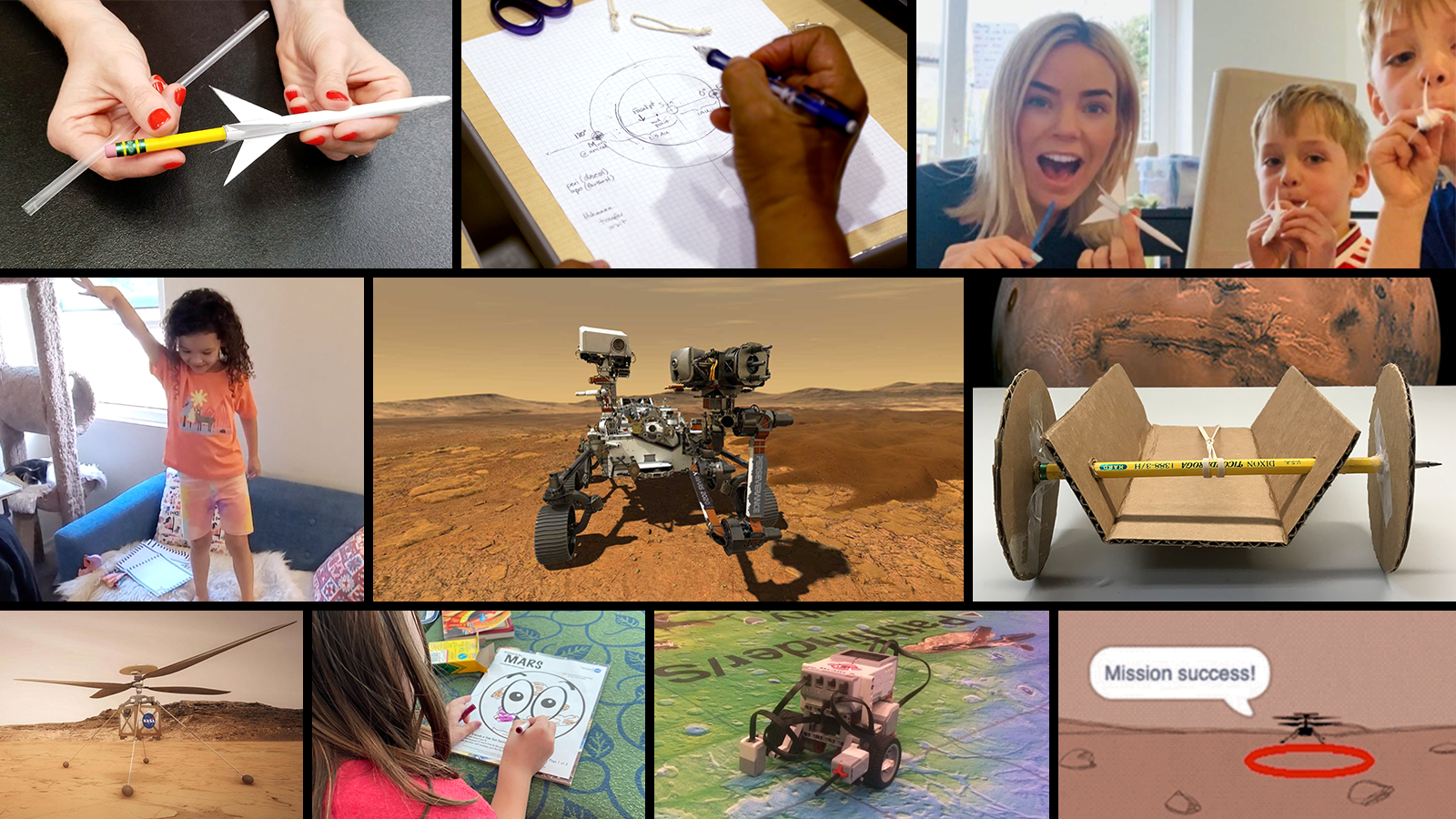
NASA's Mission to Mars Student Challenge
Take part in the exploration of Mars and bring students along for the ride with NASA's Perseverance rover .
See individual lesson pages
- The lessons and activities below are organized in each section by grade level. They can be completed in whole or part, and in any sequence.
- Most lessons are best completed by pairs or teams of students.
- Some lessons are also available as independent projects for students. The student version can be found at the link directly below the lesson info.
Ever wanted to take your students on an exciting journey? What if you could take that journey from the comfort of the classroom or out-of-school learning environment? Welcome to Mission to Mars!
Over the course of these lessons, you and your students will learn about and plan a mission to Mars. Your students will apply their creativity and science and math knowledge to explore the Red Planet. Not a scientist or engineer? That's okay! You're going to learn everything you need to know while preparing for and conducting these lessons. And you actually already have some engineering skills, whether you know it or not.
Ready, set, let's go!
- Learn About Mars
- Plan Your Mission
- Design Your Spacecraft
- Launch Your Mission
- Land on Mars
- Surface Operations
- Sample Handling
1. Learn About Mars
Students learn about Mars by watching short videos and engaging in mathematics and art activities.
Meet an Expert
Before they can launch to Mars, students need to learn more about where they're going and why. Moogega Cooper, a planetary protection engineer at NASA's Jet Propulsion Laboratory, shares her tips for this key first step to planning a successful Mars mission. Watch en Español: Seleccione subtítulos en Español bajo el ícono de configuración.
Educator Guides
What do you know about mars.
Students decide what they want to learn from a robotic mission to Mars.
Subject Science
Time Less than 30 minutes
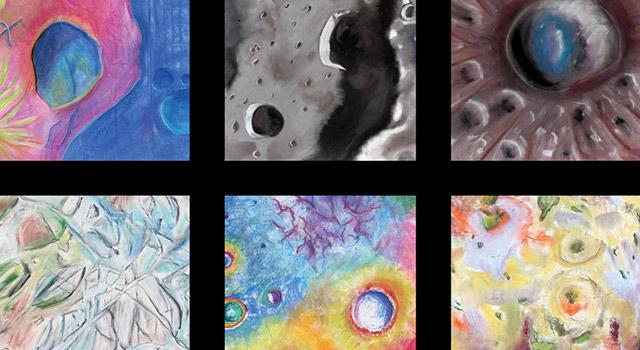
Art and the Cosmic Connection
Students use art to describe and recognize the geology on Mars.
Grades K-12
Time 1-2 hrs
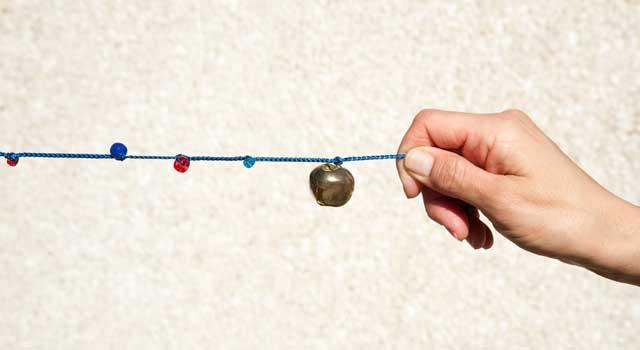
Solar System Bead Activity
Students create a scale model of the solar system using beads and string.
Time 30-60 mins
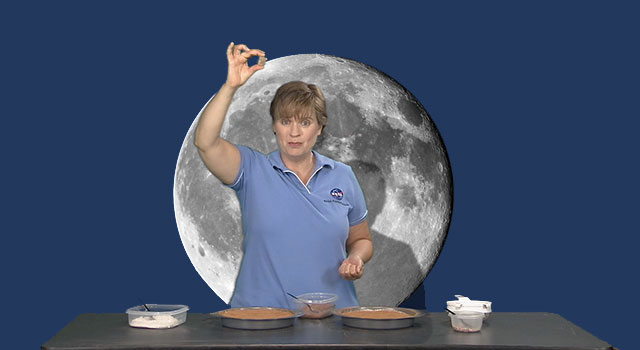
Whip Up a Crater
Use baking ingredients to whip up a Mars-like crater as a demonstration for students.
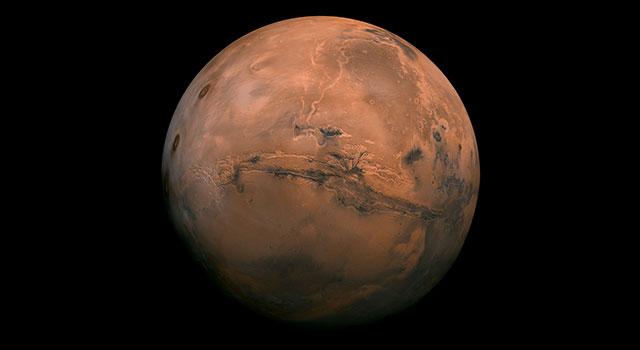
Exploring the Colors of Mars
Students use satellite and rover images to learn about the various features and materials that cause color variation on the surface of Mars, then create their own “Marscape.
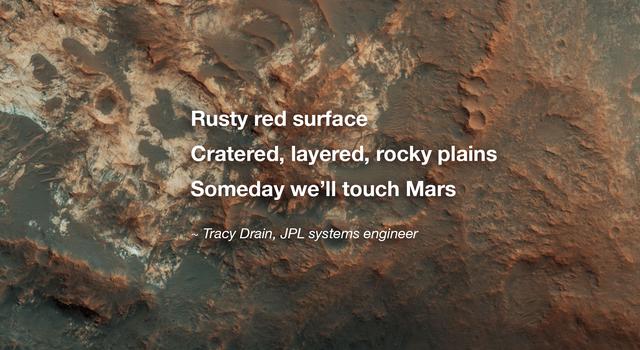
Planetary Poetry
In this cross-curricular STEM and language arts lesson, students learn about planets, stars and space missions and write STEM-inspired poetry to share their knowledge of or inspiration about these topics.
Grades 2-12

Modeling Silicates and the Chemistry of Earth's Crust
Students will use marshmallows to model the formation of silicates – the family of minerals that make up most of Earth’s crust – then analyze their chemical and physical properties.
Grades 9-12
Student Projects

Make a Moon Crater
Make craters like the ones you can see on the Moon using simple baking ingredients!
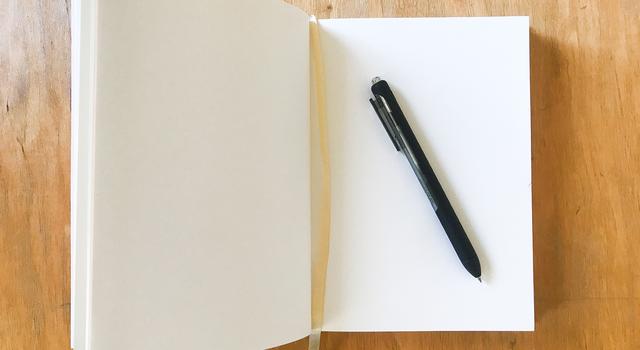
Write a Poem About Space
Are you a space poet, and you didn't even know it? Find out how to create your own poems inspired by space!

Explore Earth and Space With Art
Find out how art and science are connected. Then take a quiz to see if you can use elements of art to identify features on Earth’s surface. *Now, extend your skills with our newly added Mars quiz!
Grades 4-12
Time Less than 30 mins
Student Articles
Mission to mars: a scavenger hunt.
Students can complete the scavenger hunt activity by reading the selected articles on the NASA Space Place website to find the answers to each clue. Once they have all the clues, they will be able to spell the secret word!
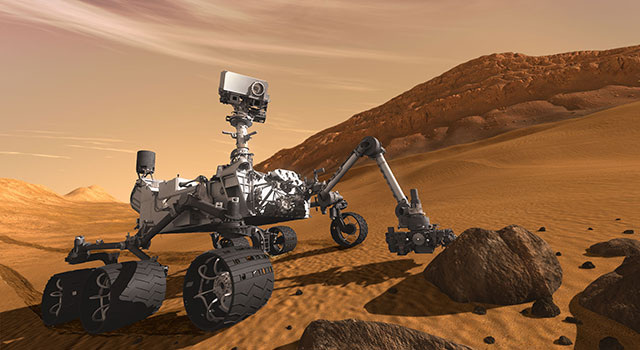
The Mars Rovers
Read about and compare the rovers NASA has sent to Mars, from Sojourner to Perseverance.
Subject Technology
Why Do We Care About Water on Mars?
Using images of Mars, read about how NASA begin its search for water on the red planet.
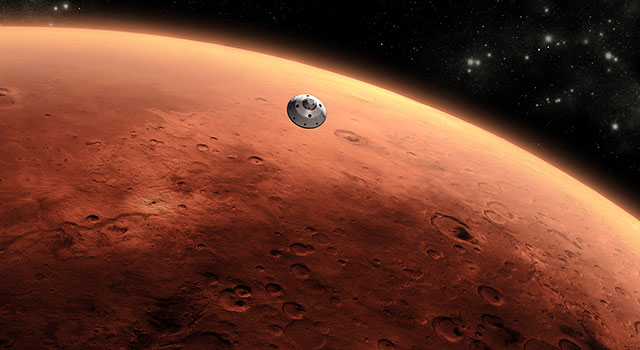
All About Mars
Learn about Mars history and the missions NASA has sent in this interactive article.
Student Videos
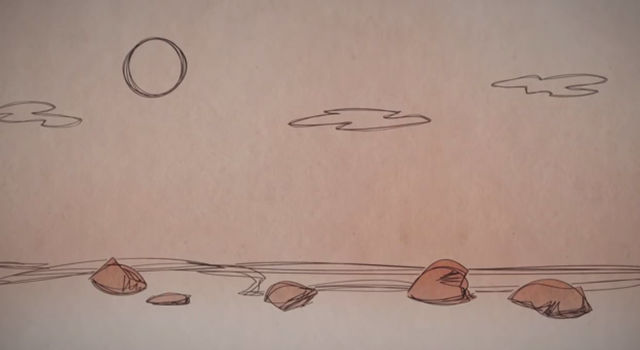
Mars in a Minute: Is Mars Really Red?
This 60-second video answers one of the most frequently asked questions about our planetary neighbor.
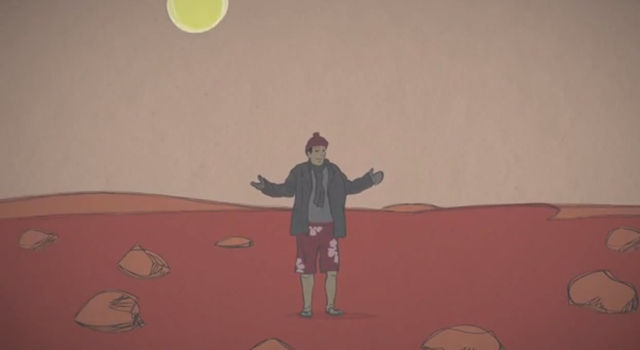
Mars in a Minute: Is Mars Red Hot?
What would it feel like if you could stand on Mars – toasty warm, or downright chilly?
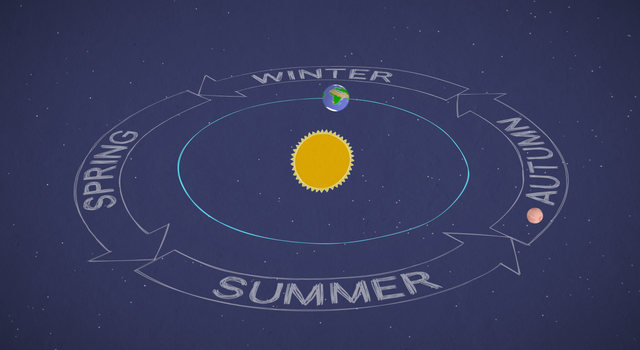
Mars in a Minute: How Long is a Year on Mars?
How long is does it take Mars to make one trip around the Sun?
Mars in a Minute: How Did Mars Get Such Enormous Mountains?
Why are the tallest peaks in the solar system found on one of its smallest worlds? Like any planet, how Mars looks outside is tied to what goes on inside.
Mars in a Minute: What's Inside Mars?
We know what the Red Planet looks like from the outside – but what's going on under the surface of Mars?
Mars in a Minute: Are There Quakes on Mars?
Are there earthquakes on Mars – or rather, \"marsquakes\"? What could they teach us about the Red Planet?
Solar System Size and Distance
How big are the planets and how far away are they compared to each other? Find out in this video about the scale of our solar system.
Grades 1-12
2. Plan Your Mission
Students engage in the engineering design process to plan a mission to Mars.
Elizabeth Cordoba, a payload systems engineer at NASA's Jet Propulsion Laboratory, talks about her job on the Perseverance Mars rover mission and some of the important factors to consider when planning a mission to the Red Planet. Watch en Español: Seleccione subtítulos en Español bajo el ícono de configuración.
What Tools Would You Take to Mars?
Students decide what they want to learn from a robotic mission to Mars and what tools they will put on their robot to accomplish their goals.
Time 30-60 minutes

Marsbound! Mission to the Red Planet
Students learn the process of design, engineering and technology for a mission to Mars through this board-game activity.
Subject Engineering
Grades 3-12
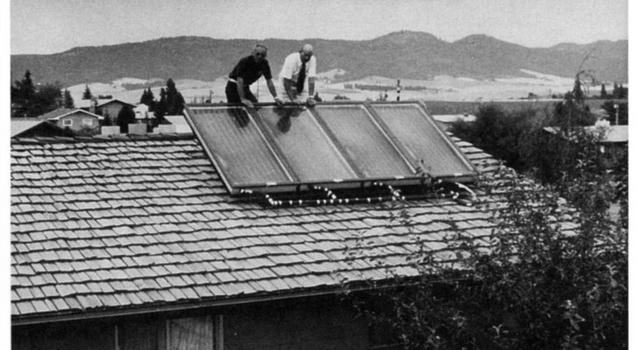
Feel the Heat
Students learn about solar power by designing and building a solar hot water heater and seeing how big a temperature change they can get.
Let's Go to Mars! Calculating Launch Windows
Students use advanced algebra concepts to determine the next opportunity to launch a spacecraft to Mars.
Subject Mathematics
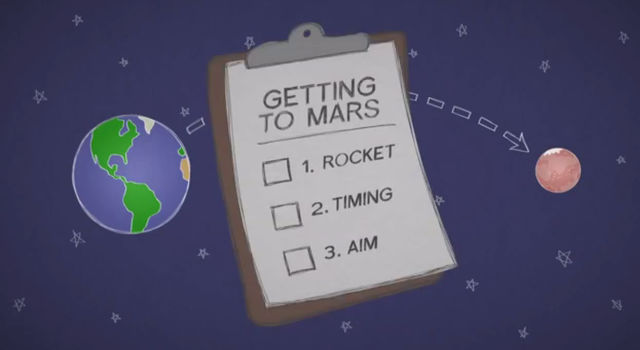
Mars in a Minute: How Do You Get to Mars?
This 60-second video covers a few key things to remember when planning a trip to the Red Planet.
Mars in a Minute: How Do You Choose a Landing Site?
So, you want to study Mars with a lander or rover – but where exactly do you send it? Learn how scientists and engineers tackle the question of where to land on Mars in this 60-second video.
3. Design Your Spacecraft
Now that a mission has been planned, students learn about and build spacecraft, including satellites and rovers, as well as a robotic arm.
Before they can launch to Mars, students need to design their spacecraft based on what they want it to do on the Red Planet. Billy Allen, a mechatronics engineer at NASA's Jet Propulsion Laboratory, talks about his job on the Perseverance Mars rover mission and some of the important factors to consider when designing a spacecraft. Watch en Español: Seleccione subtítulos en Español bajo el ícono de configuración.

Robotic Arm Challenge
Students design, build and use a model robotic arm to move items from one location to another.
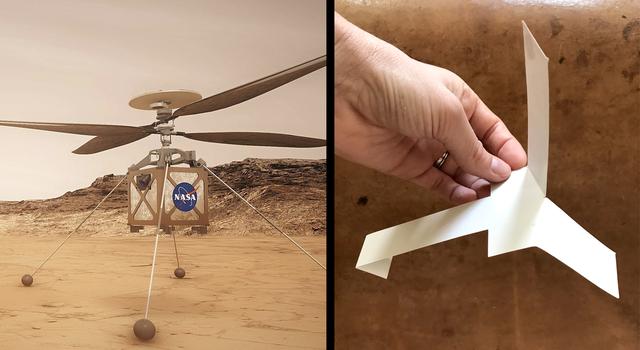
Make a Paper Mars Helicopter
In this lesson, students build a paper helicopter, then improve the design and compare and measure performance.

Design a Robotic Insect
Design a robotic insect to go to an extreme environment. Then, compare the design process to what NASA engineers do when building robots for Mars!
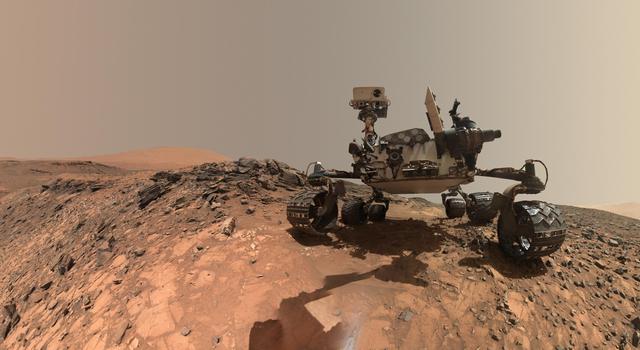
Explore Mars with Scratch
Students learn about surface features on Mars, then use a visual programming language to create a Mars exploration game.
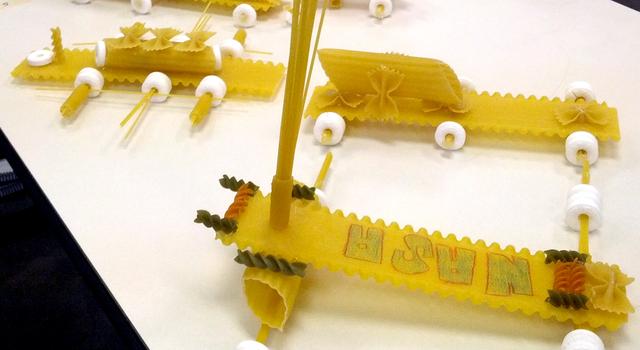
Planetary Pasta Rovers
Students build a pasta rover that can travel down a ramp.
Build a Satellite
Students will use the engineering design process to design, build, test and improve a model satellite intended to investigate the surface of a planet.
Time 2+ hrs
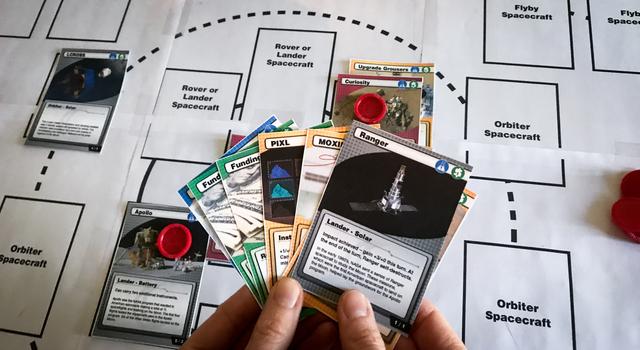
NASA Space Voyagers: The Game
Students play a strategy card game that requires them to use problem-solving to successfully explore the Moon and Mars.
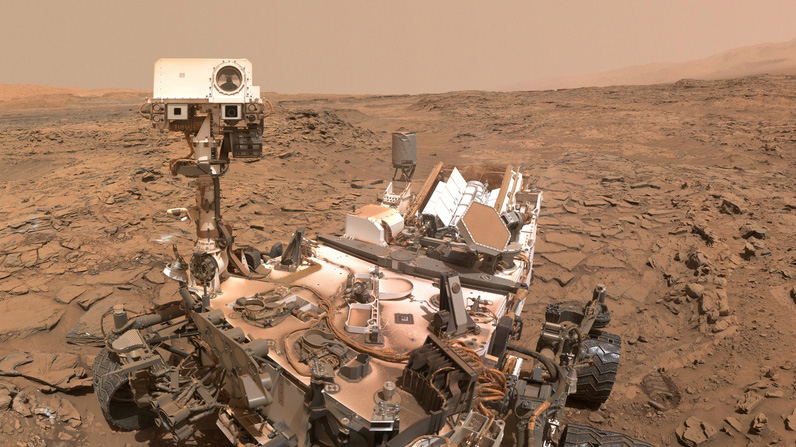
Robotics: Creating a Roving Science Lab
In this challenge, students will program a rover to use a color sensor on several rock samples, allowing them to simulate how the Mars Curiosity rover uses its ChemCam instrument to analyze light emitted from geological samples on Mars.
Robotics: Making a Self-Driving Rover
In this challenge, students must program a rover to get from point A to point B on a map without driving across any of the craters located between the two points.
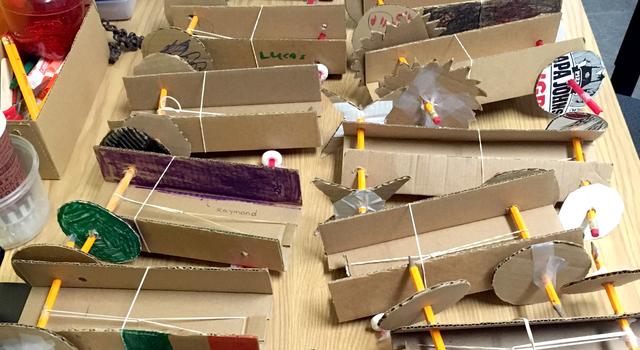
Roving on the Moon
Students build a rubber-band-powered rover that can scramble across the room.
Grades 6-12
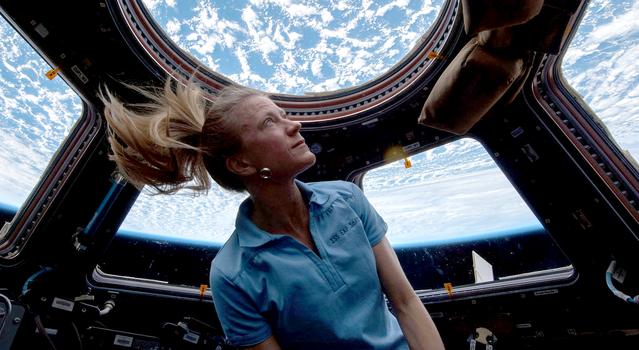
The Air Up There: Making Space Breathable
In this lesson, students will use stoichiometry just like NASA scientists in order to equip space missions with breathable air for our astronauts.
Grades 10-12
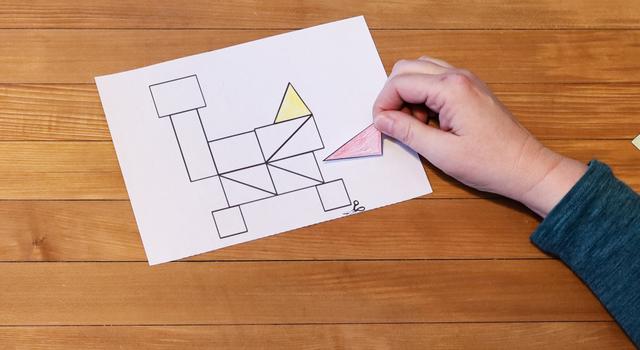
Build a Rover and More With Shapes
Use geometric shapes called tangrams to build a rover and other space-themed designs!
Build a paper helicopter, then see if you can improve the design like NASA engineers did when making the first helicopter for Mars.
Students design a robotic insect for an extraterrestrial environment, then compare the process to how NASA engineers design robots for extreme environments like Mars.
Code a Mars Helicopter Video Game
Create a video game that lets players explore the Red Planet with a helicopter like the one going to Mars with NASA's Perseverance rover!
Make a Moon or Mars Rover Game
Create a Moon or Mars exploration game using Scratch, a visual programming language. Think like NASA space-mission planners to design your game!
Make a Cardboard Rover
Build a rubber-band-powered rover that can scramble across a room.
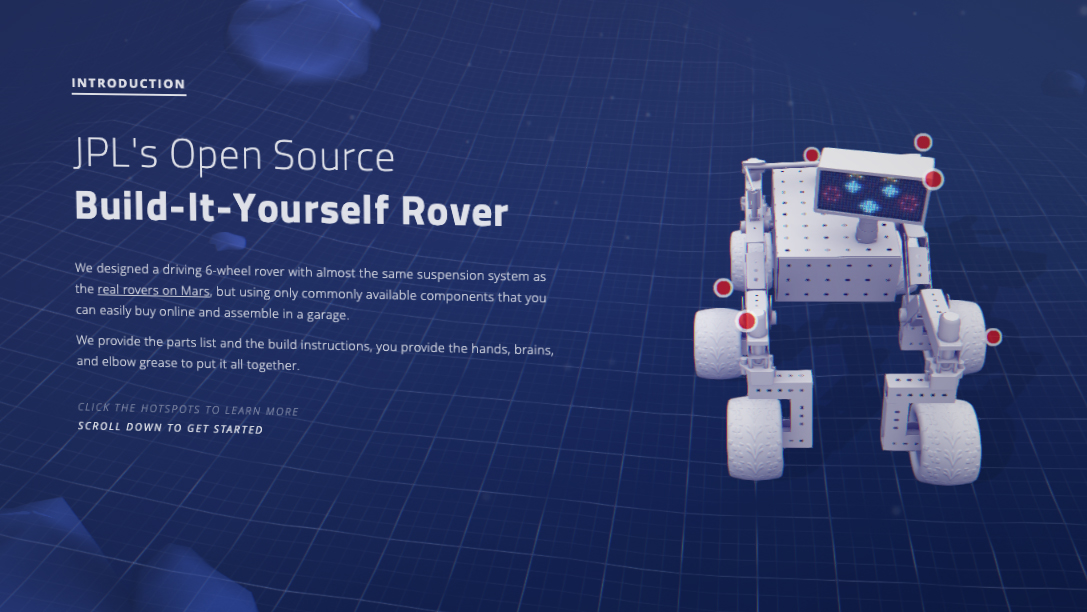
JPL's Open Source Build-It-Yourself Rover
Build a driving 6-wheel rover with almost the same suspension as the real rovers on Mars using commonly available components you can easily buy online and assemble in a garage.
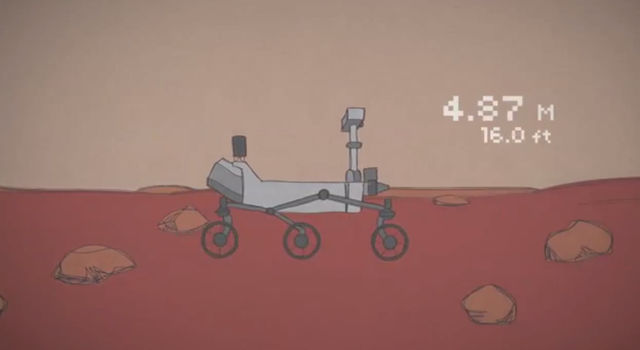
Mars in a Minute: How Do Rovers Drive on Mars?
Where's the driver's seat for a Mars rover? Millions of miles away, back on Earth!
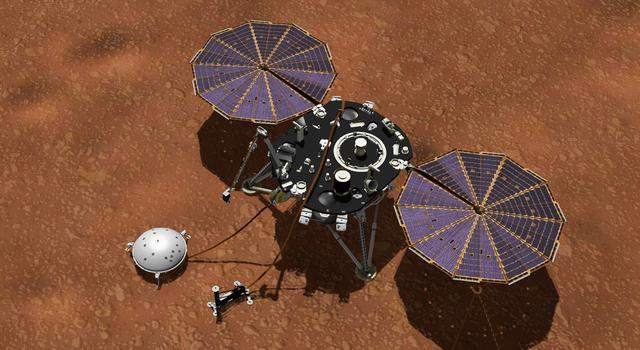
What Powers a Spacecraft?
Learn how spacecraft get the power that keeps them exploring far and wide.
4. Launch Your Mission
Students learn through the engineering design process what it takes to launch a spacecraft.
Before they can conduct research on Mars, students need to launch their spacecraft. Sarah Elizabeth McCandless, a navigation engineer at NASA's Jet Propulsion Laboratory, talks about her job on the Perseverance Mars rover mission and some of the important factors to consider when launching a mission to the Red Planet. Watch en Español: Seleccione subtítulos en Español bajo el ícono de configuración.
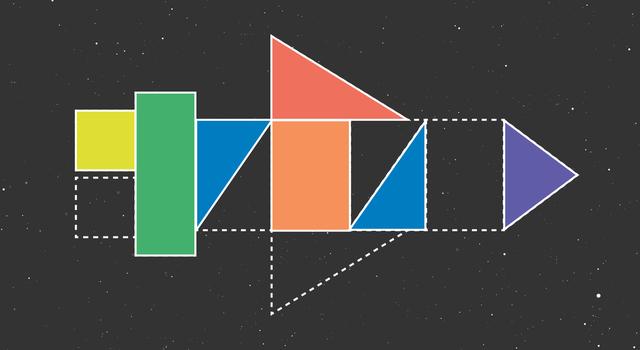
Tangram Rocket
Students use tangrams to create rockets while practicing shape recognition.
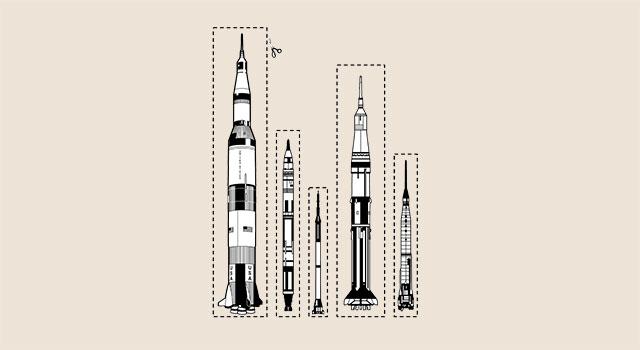
Rockets by Size
Students cut out, color and sequence paper rockets in a simple mathematics lesson on measurement.
Simple Rocket Science
Students perform a simple science experiment to learn how a rocket works and demonstrate Newton’s third law of motion.
Simple Rocket Science Continued
Students gather data on a balloon rocket launch, then create a simple graph to show the results of the tests.
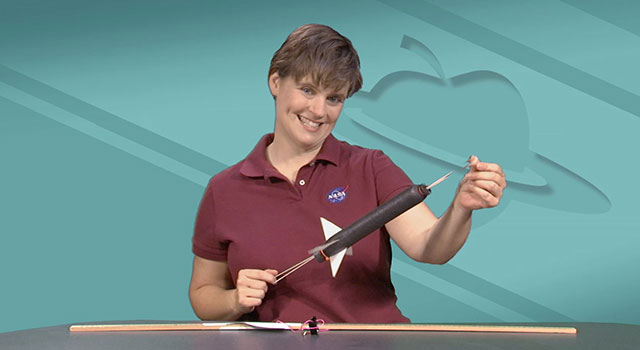
Build and Launch a Foam Rocket
Students build rubber-band-powered rockets and launch them at various angles to learn about rocket stability and trajectory.
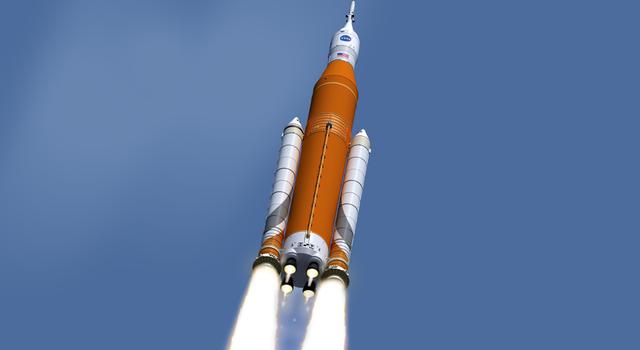
Rocket Activity: Heavy Lifting
Students construct balloon-powered rockets to launch the greatest payload possible to the classroom ceiling.
Soda-Straw Rockets
Students study rocket stability as they design, construct and launch paper rockets using soda straws.
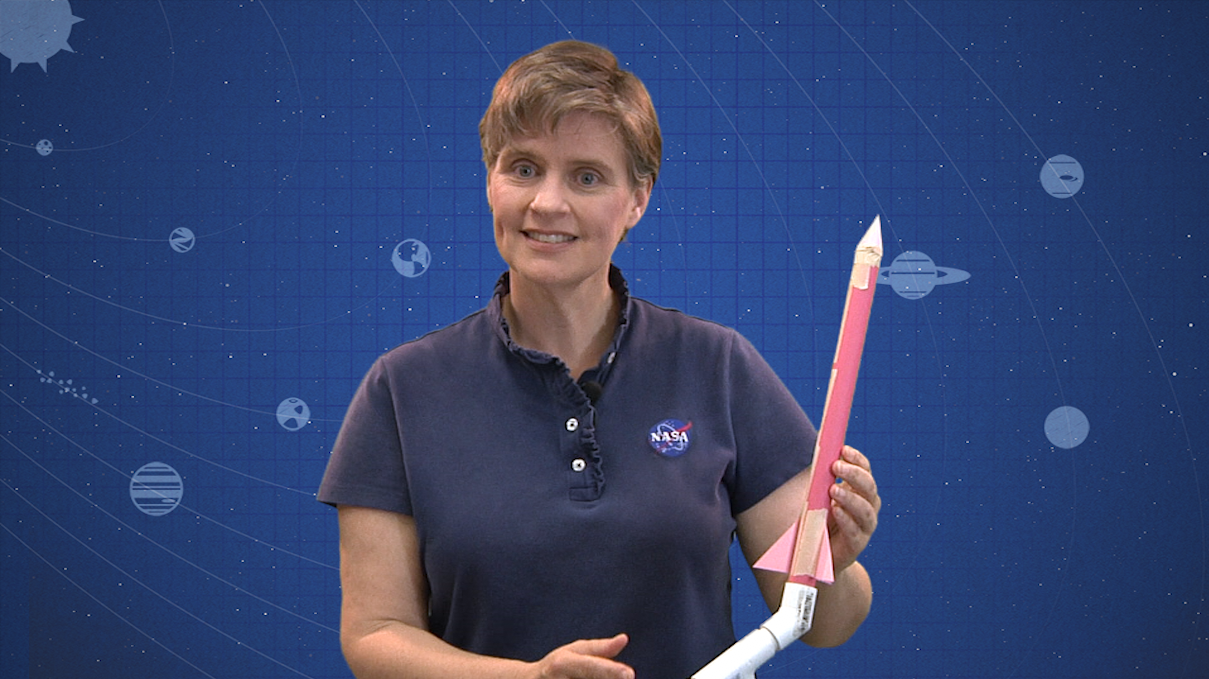
Stomp Rockets
In this video lesson, students learn to design, build and launch paper rockets, calculate how high they fly and improve their designs.
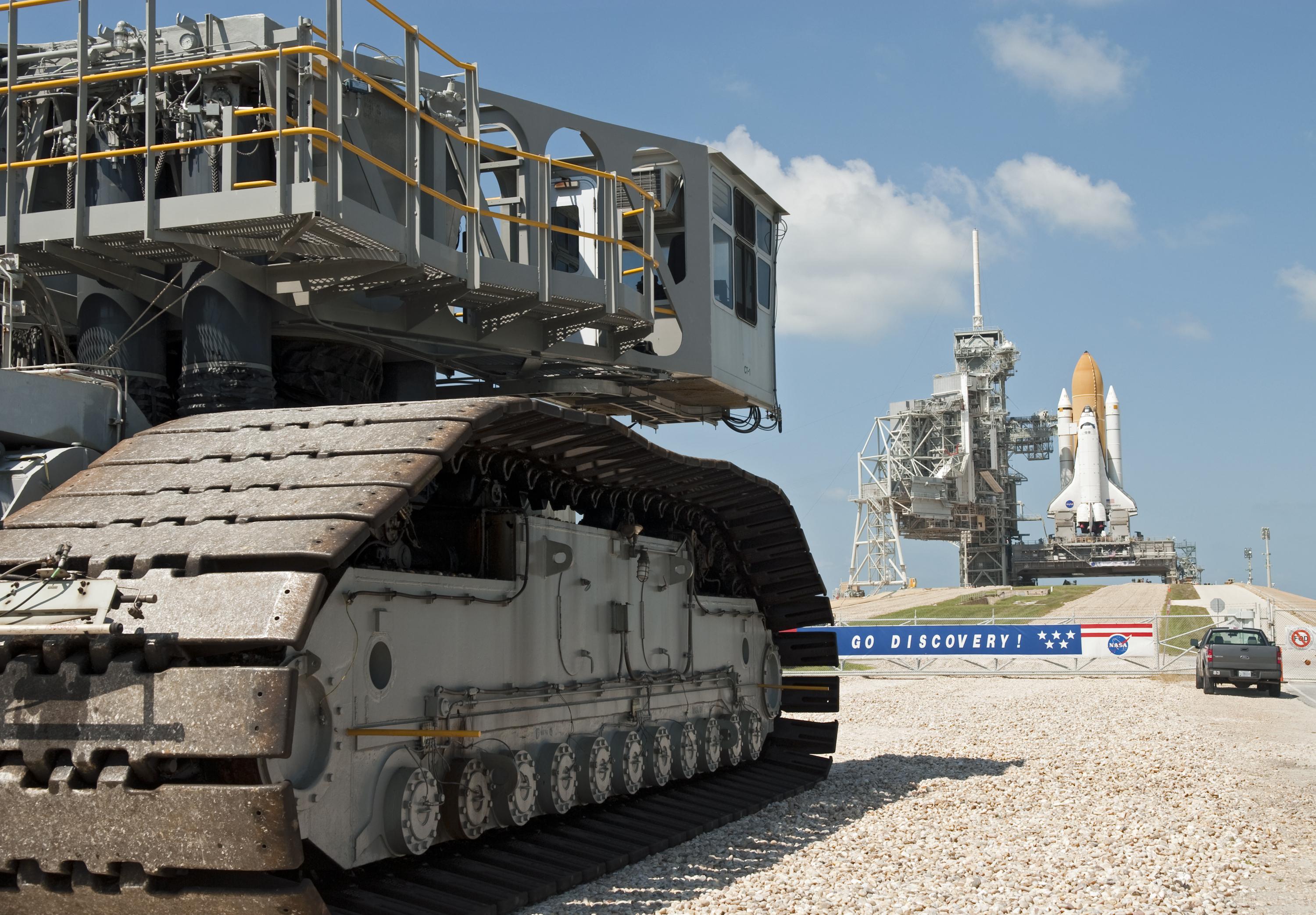
Robotics: Engineering a Rocket Transporter
Students design, build and program a robotic “super crawler” to transport a payload from a starting position to a target launch pad, deliver the payload in an upright position and return the robot to the starting point.
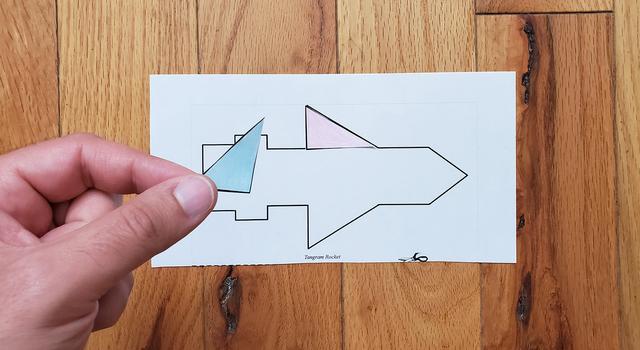

Build a Rocket and More With Shapes
Use geometric shapes called tangrams to build a rocket and other space-themed designs!
Make a Straw Rocket
Create a paper rocket that can be launched from a soda straw – then, modify the design to make the rocket fly farther!
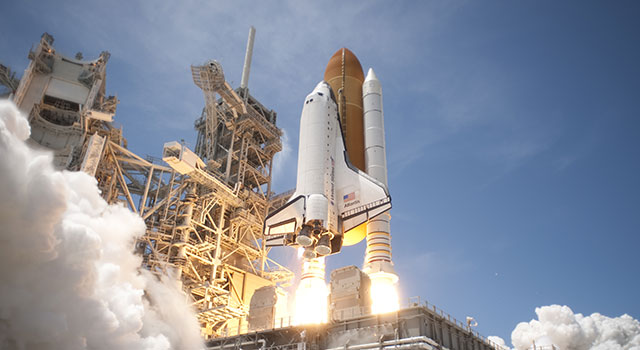
How Do We Launch Things Into Space?
Find out how rockets lift off and travel above Earth and even to other planets!
5. Land on Mars
Students use the engineering design process to design landing systems that will enable their spacecraft to land softly on the Mars surface.
After a successful launch to Mars, students need to land their spacecraft. Erisa Stilley, an entry, descent and landing engineer at NASA's Jet Propulsion Laboratory, talks about her job on the Perseverance Mars rover mission and some of the important factors to consider when landing a mission on the Red Planet. Watch en Español: Seleccione subtítulos en Español bajo el ícono de configuración.
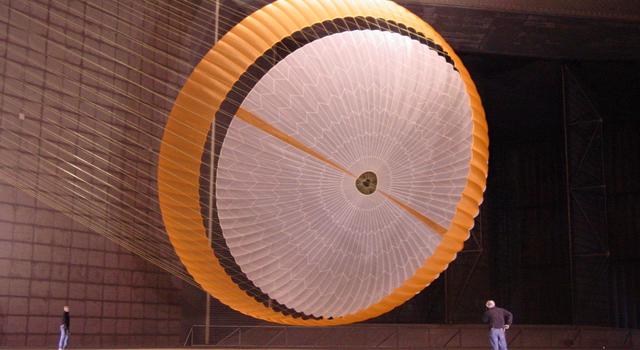
Parachute Design
Students design and test parachute landing systems to successfully land a probe on target.
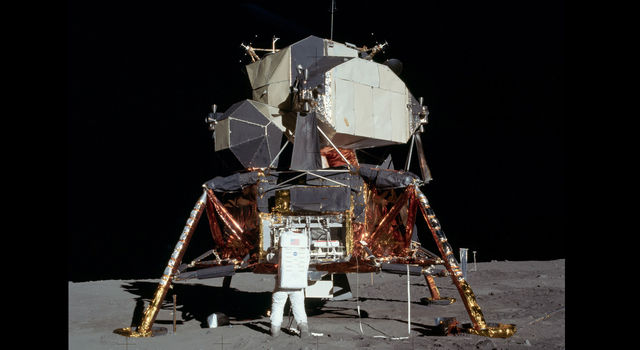
Students design and build a shock-absorbing system that will protect two "astronauts" when they land.
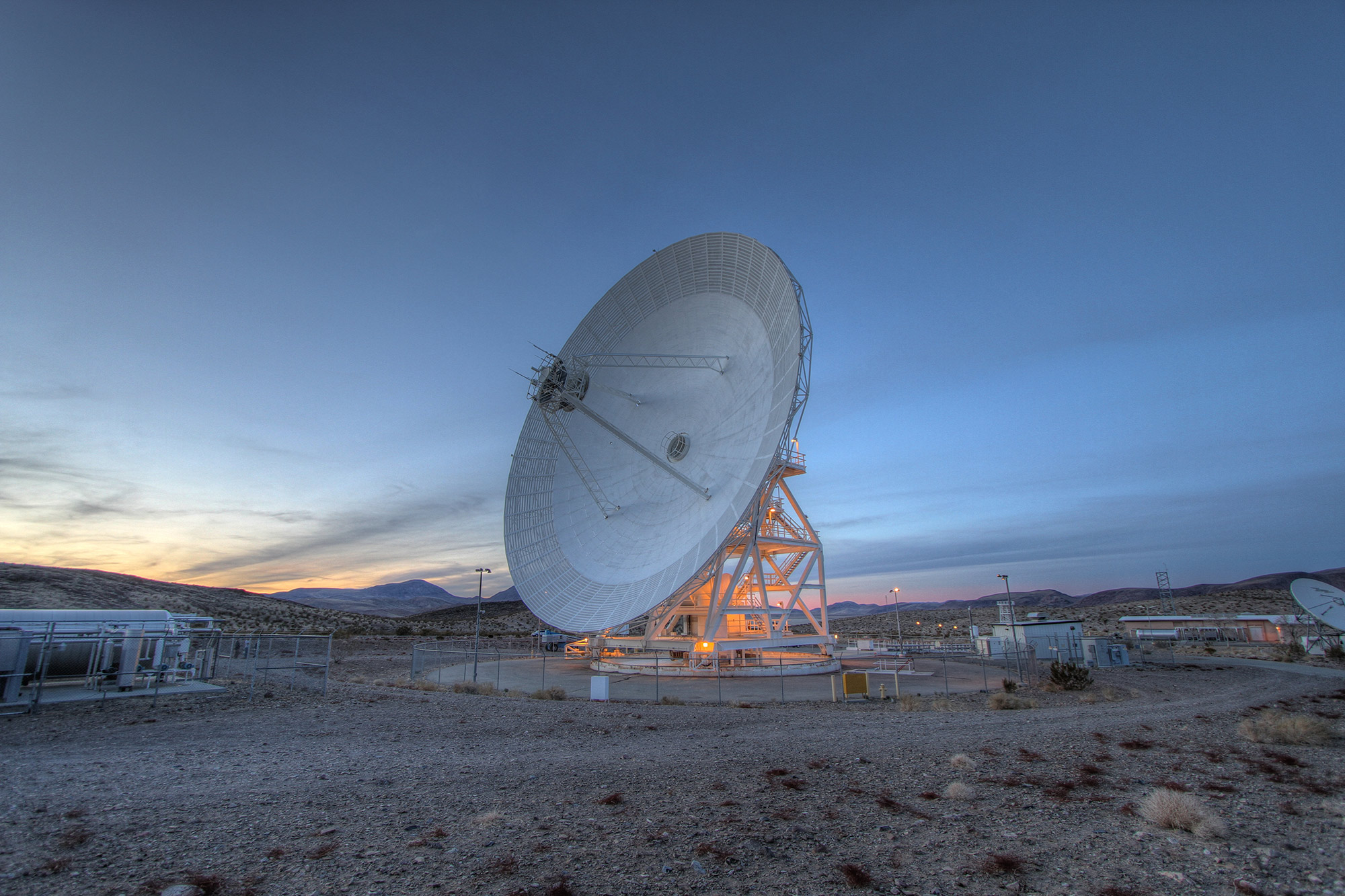
Speaking in Phases
Students learn how waves are used in communication between far-away spacecraft and the Deep Space Network on Earth. They then practice communicating using a similar process.
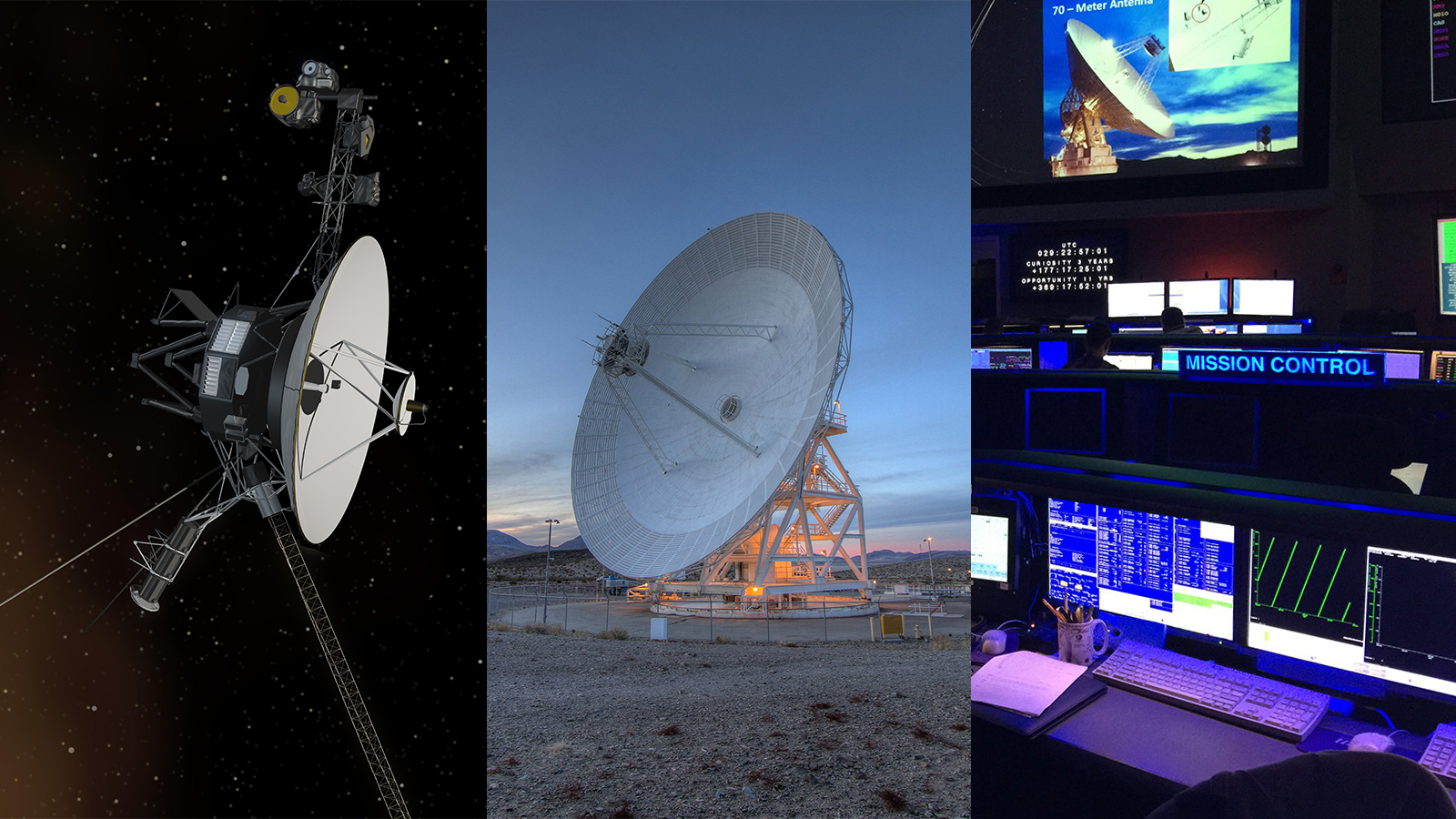
Catching a Whisper from Space
Students will kinesthetically model the mathematics used to communicate with spacecraft.
Time 1-2 hours
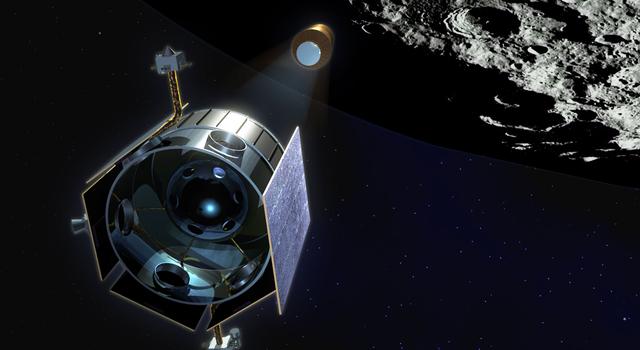
Students modify a paper cup so it can zip down a line and drop a marble onto a target
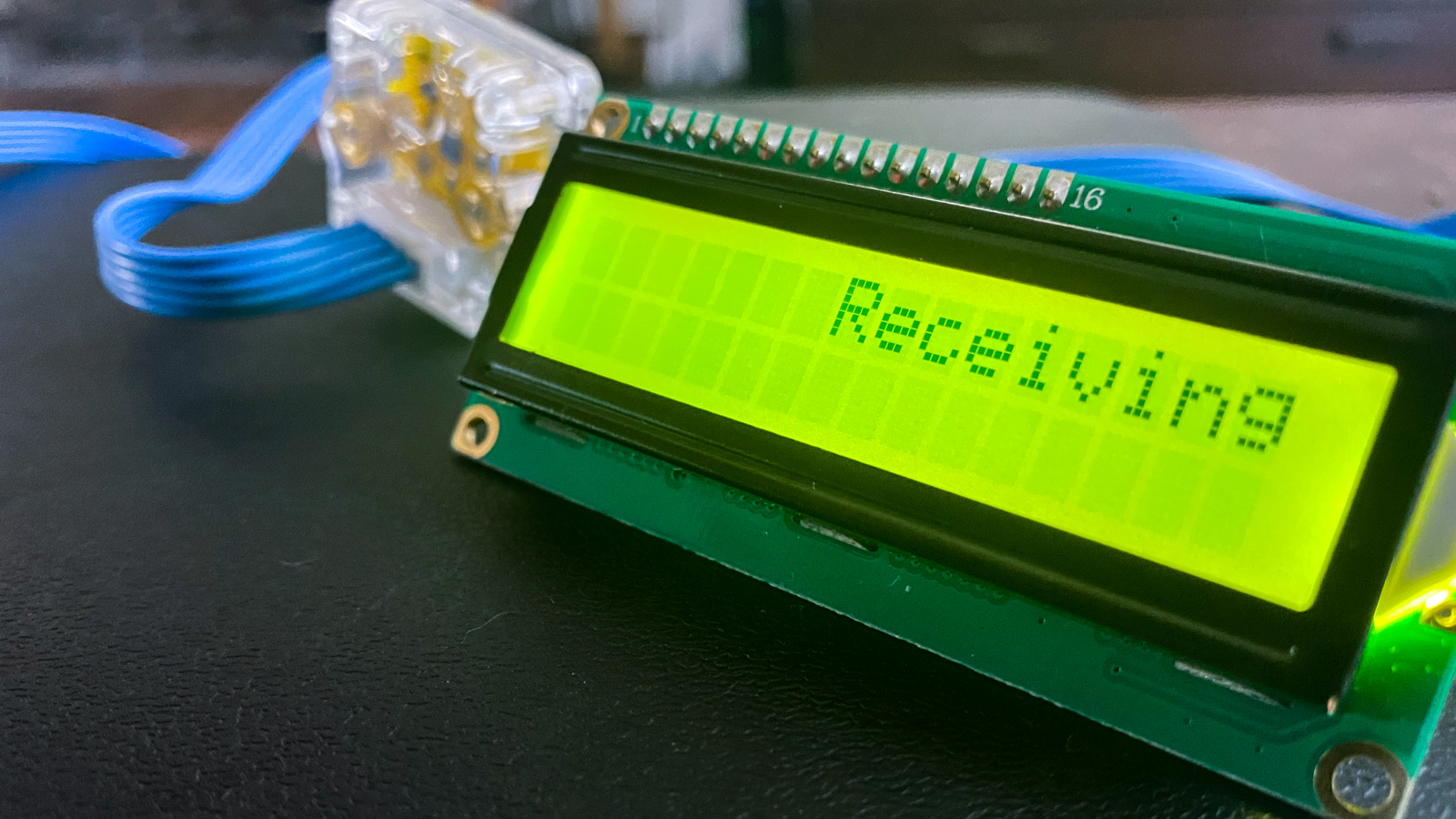
Build a Relay Inspired by Space Communications
Students model NASA spacecraft communication using microdevices along with light and mirrors to build a relay that can send information to a distant detector, and then program their detector to indicate when data is being received.
Grades 8-12
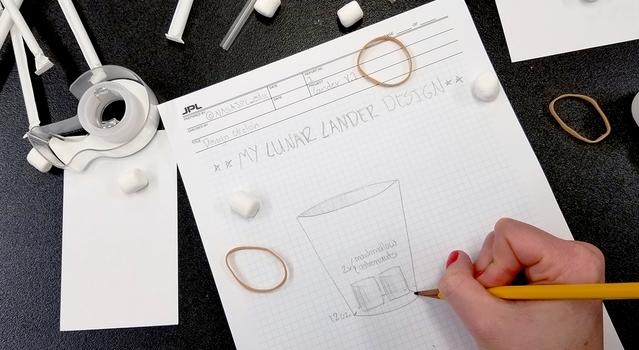
Make an Astronaut Lander
Design and build a lander that will protect two "astronauts" when they touch down.
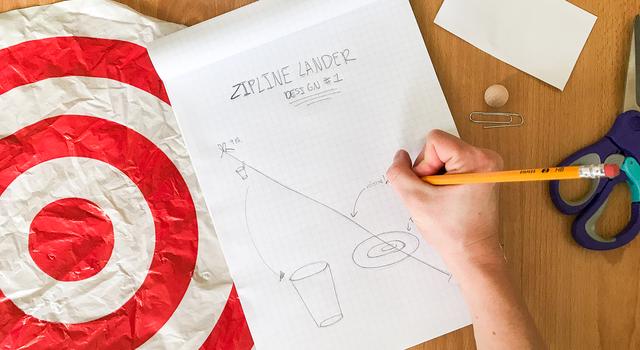
Land a Spacecraft on Target
Modify a paper-cup spacecraft so it can zip down a line and drop a "lander" onto a target.
Code a Mars Landing
Use coding and computer science to simulate how NASA lands spacecraft on Mars during the process known as entry, descent, and landing, or EDL.
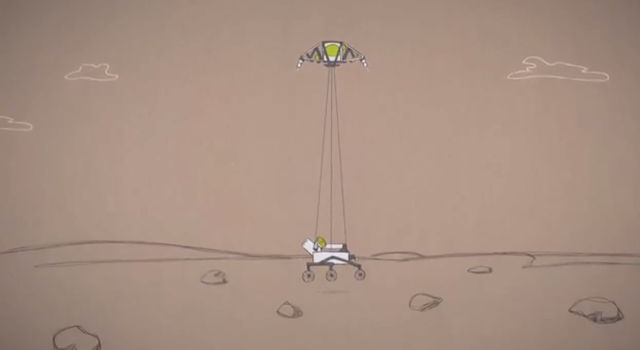
Mars in a Minute: How Do You Land on Mars?
This 60-second video from NASA's Jet Propulsion Laboratory explains three ways to land on the surface of the Red Planet.

Mars in a Minute: How Hard Is It to Land Curiosity on Mars?
Find out what it took for the Curiosity Mars rover to touch down successfully.
Mars in a Minute: Phoning Home: Communicating from Mars
How did we know that the Curiosity Mars rover landed safely on the surface of Mars?
Time 3 mins
6. Surface Operations
Once their spacecraft has landed safely, students are challenged to learn about spacecraft communication, energy management on Mars, surface features and life science.
After safely touching down on the surface of Mars, it's time for students to start operating their spacecraft. Amila Cooray, a mechatronics engineer at NASA's Jet Propulsion Laboratory, talks about his job on the Perseverance Mars rover mission and what goes into operating a mission on the surface of the Red Planet. Watch en Español: Seleccione subtítulos en Español bajo el ícono de configuración.
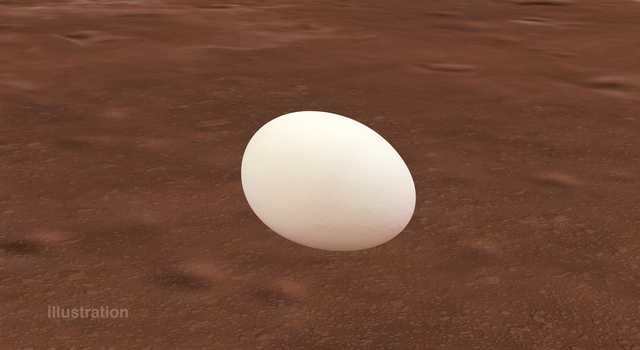
Planetary (Egg) Wobble and Newton’s First Law
Students try to determine the interior makeup of an egg (hard-boiled or raw) based on their understanding of center of mass and Newton’s first law of motion.
Time 30 mins - 1 hr
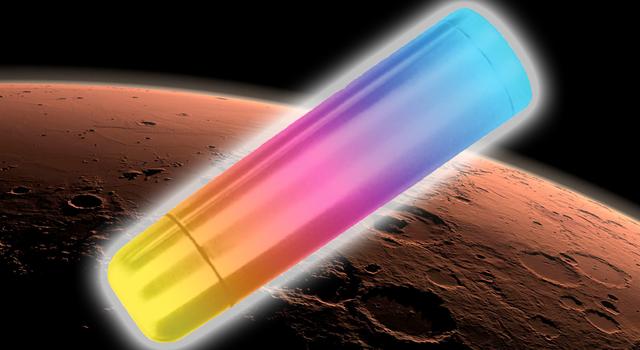
Mars Thermos
Student teams use the engineering design process and everyday materials to design an insulator that will keep a small amount of water from rapidly changing temperature.
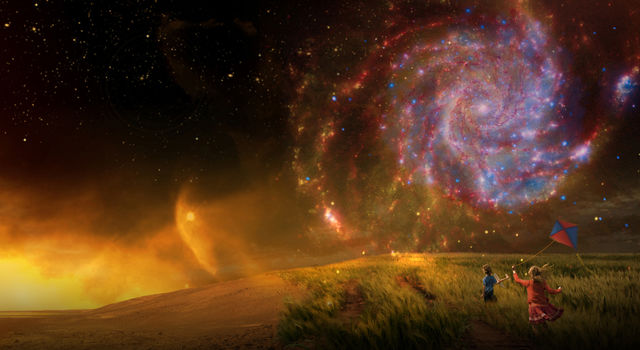
Looking for Life
Using the fundamental criteria for life, students examine simulated extraterrestrial soil samples for signs of life.
Lava Layering: Making and Mapping a Volcano
Students learn about Earth processes by simulating and examining lava flows from a volcano model made of play dough.
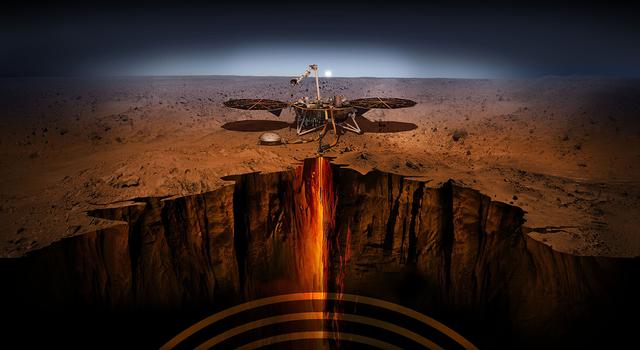
Heat Flow Programming Challenge
Students use microcontrollers and temperature sensors to measure the flow of heat through a soil sample.
Grades 5-12
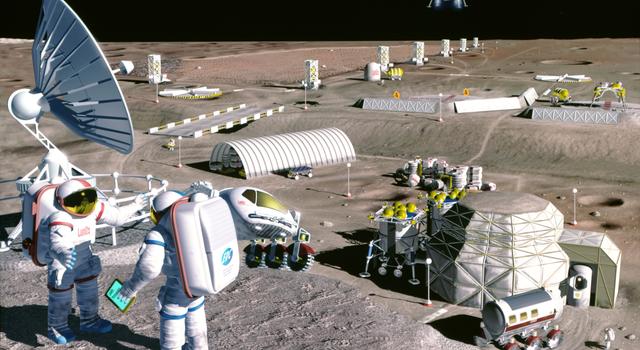
Students build a solar oven and learn about the importance of solar energy for establishing a Mars base.
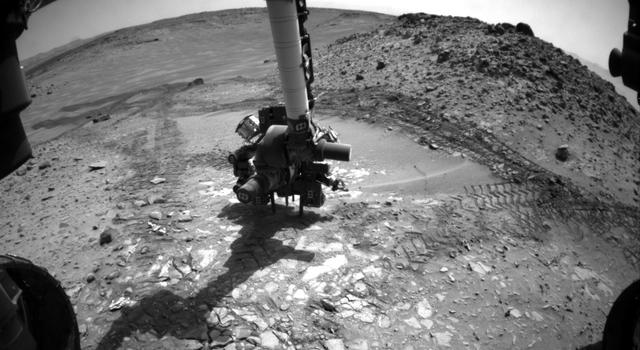
Describe Rocks Like a NASA Scientist
Learn how to describe rock samples like a NASA scientist. Then, take a quiz to see if you can match edible rocks made of candy bars – and real rocks from Earth and space – to the correct description.
Make a Volcano
Make a volcano with baking soda, vinegar and play dough. Then, add multiple layers that you can investigate like a NASA scientist.
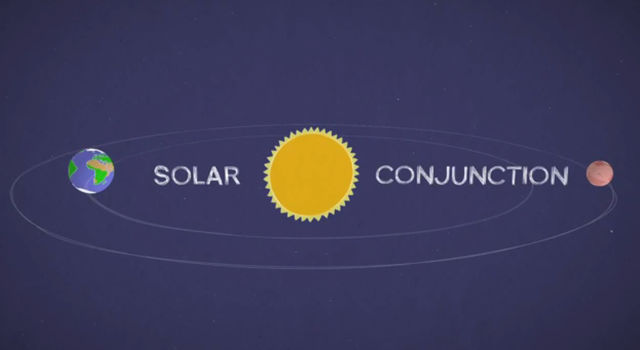
Mars in a Minute What Happens When the Sun Blocks Our Signal?
What is "solar conjunction," and how does it affect communications with our spacecraft at Mars?
Time 60 seconds
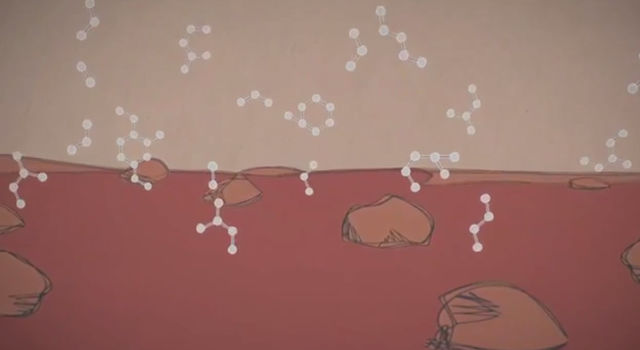
Mars in a Minute Why is Curiosity Looking for Organics?
Has Mars ever had the right ingredients for life? What are organic molecules, and what can they tell us about the history of Mars?
7. Sample Handling
To conclude a successful mission to Mars, students design a small rocket that will return samples to Earth from the Red Planet.
An important part of the Perseverance Mars rover mission is to collect and store rock samples for future missions to retrieve and eventually return to Earth. Aaron Yazzie, a mechanical engineer at NASA's Jet Propulsion Laboratory, talks about his job on the Perseverance Mars rover mission and how the rover will collect and store samples on the Red Planet. Watch en Español: Seleccione subtítulos en Español bajo el ícono de configuración.
Lesson Plans
- Contact Space Station Explorers
- Space Station Ambassador Program
- ISS360 (News, Features)
- Press Releases
- Spotlight Newsletter
- In the News
- CASIS Expert Series
- Stay Informed
- Donate Today/Monthly
- Crypto, Stock, and DAF Giving
- Privacy Policy
- Terms of Use
Space Station Explorers
- All Grade Ranges Elementary (35) High School (1) High School and Up (15) Middle School (37)
- All Subjects Computer/Data Science (1) Earth and Space Observation (5) Engineering and Robotics (10) Human Health and Biology (13) Language Arts (1) Life Sciences (8) Physical Sciences (5) Student Experiments (7)
- All Learning Environments Classroom (40) Learn at Home (38)

"A Beautiful Planet" Educator Resource Guide
Enjoy activities to learn about the Earth, the importance of the ISS, and the work that’s being done to conserve our planet and its resources
More Information
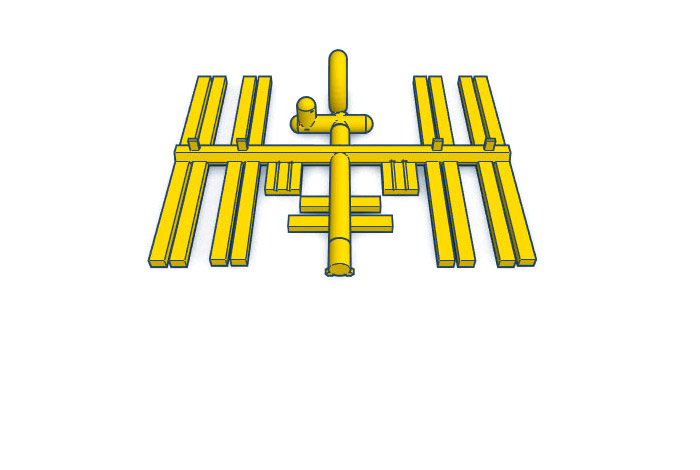
3D Printable ISS Pendant
Designed by Liam Kennedy (creator of ISS-Above), this activity can be downloaded for 3D printing or Minecraft.

Ants in Space
Learn about ant communication and behavior, build ant habitats with simple materials, and compare observations with videos from the International Space Station.
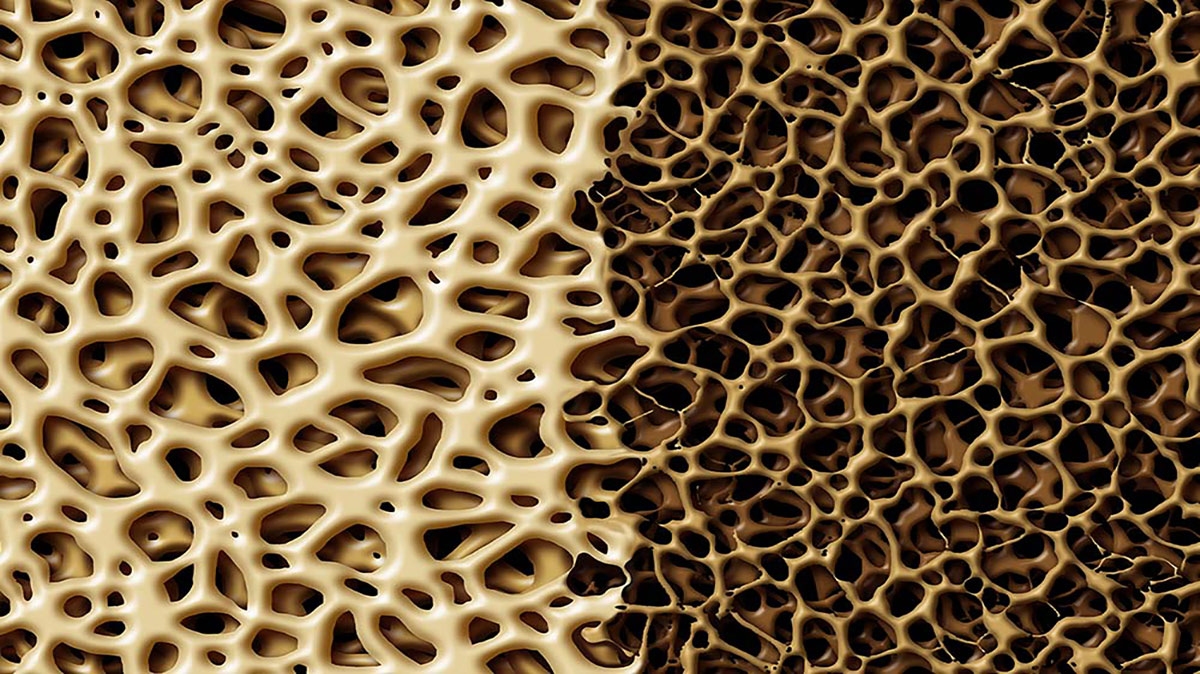
Bone Loss in Space: "Bag of Bones"
Using bags of cereal, students learn about factors affecting bone density, including the microgravity environment experienced by Space Station astronauts.

Butterflies in Space
Study caterpillars and butterflies in the classroom and compare your observations with a real ISS experiment!
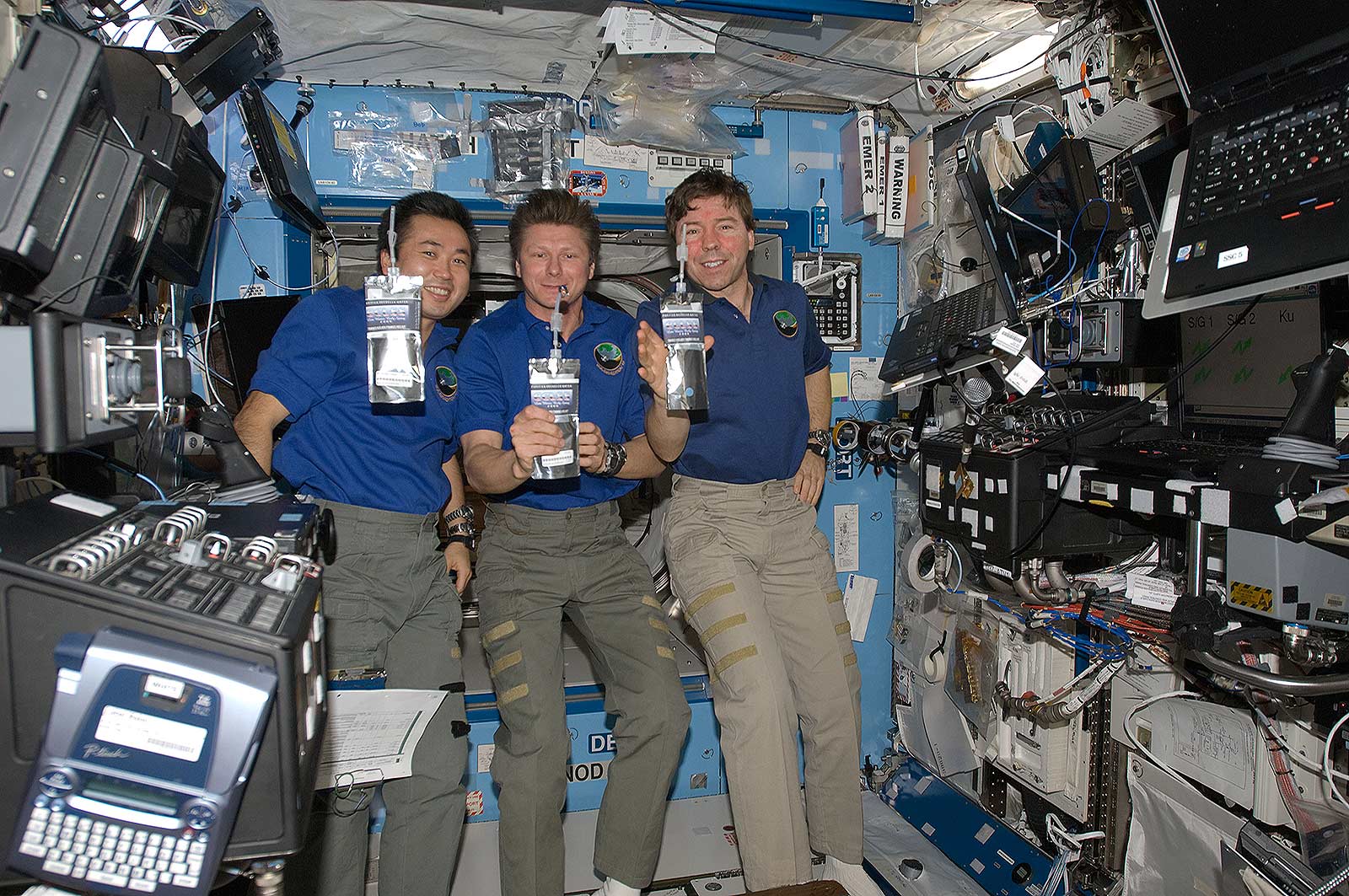
Cleaning Water
Design and build a water filtering system then collect data to determine whether or not filtering was successfull
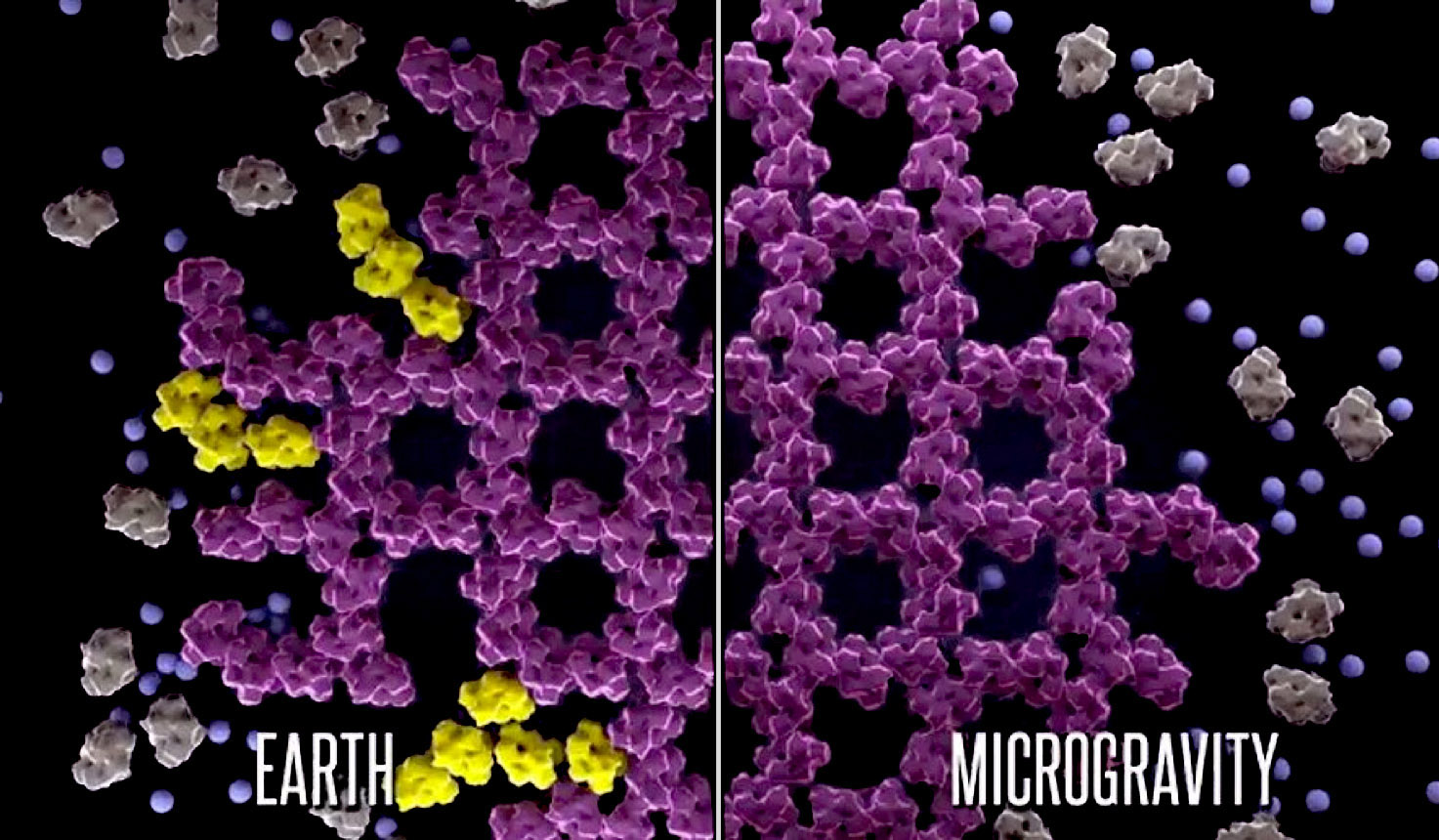
Crystal Growth in Microgravity
Investigate the growth of crystals under different temperature conditions to better understand their growth and development
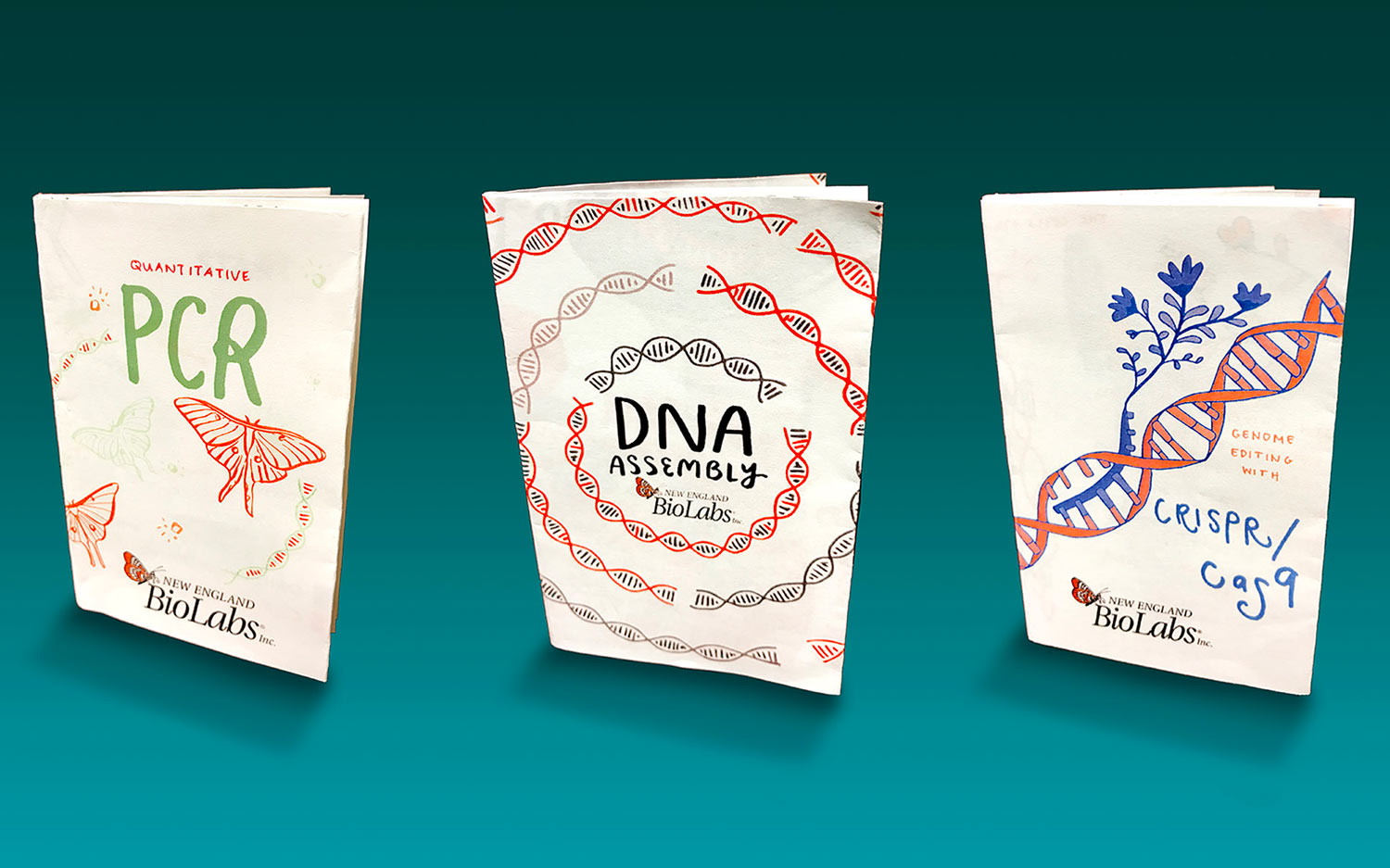
DNA Minizines
Print and fold these cute "minizines" and enjoy their simple, playful explanations of important topics in genetic research
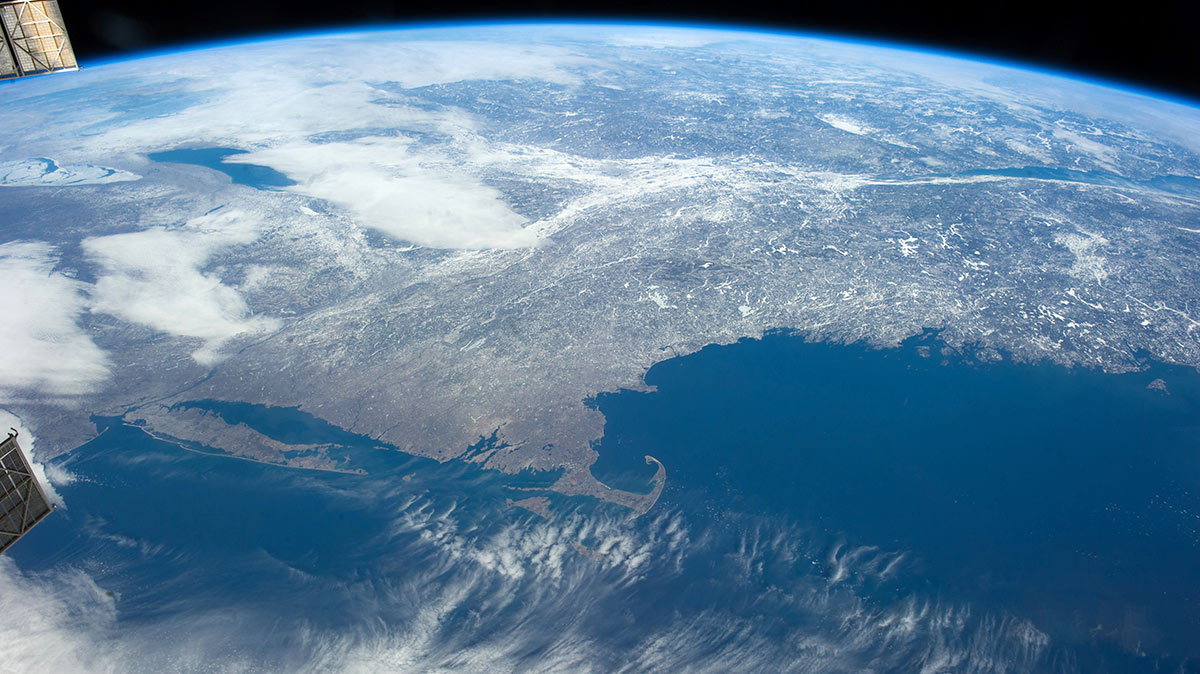
Earth Observation from the ISS
Get a new perspective by viewing your home planet from the unique vantage point of the International Space Station
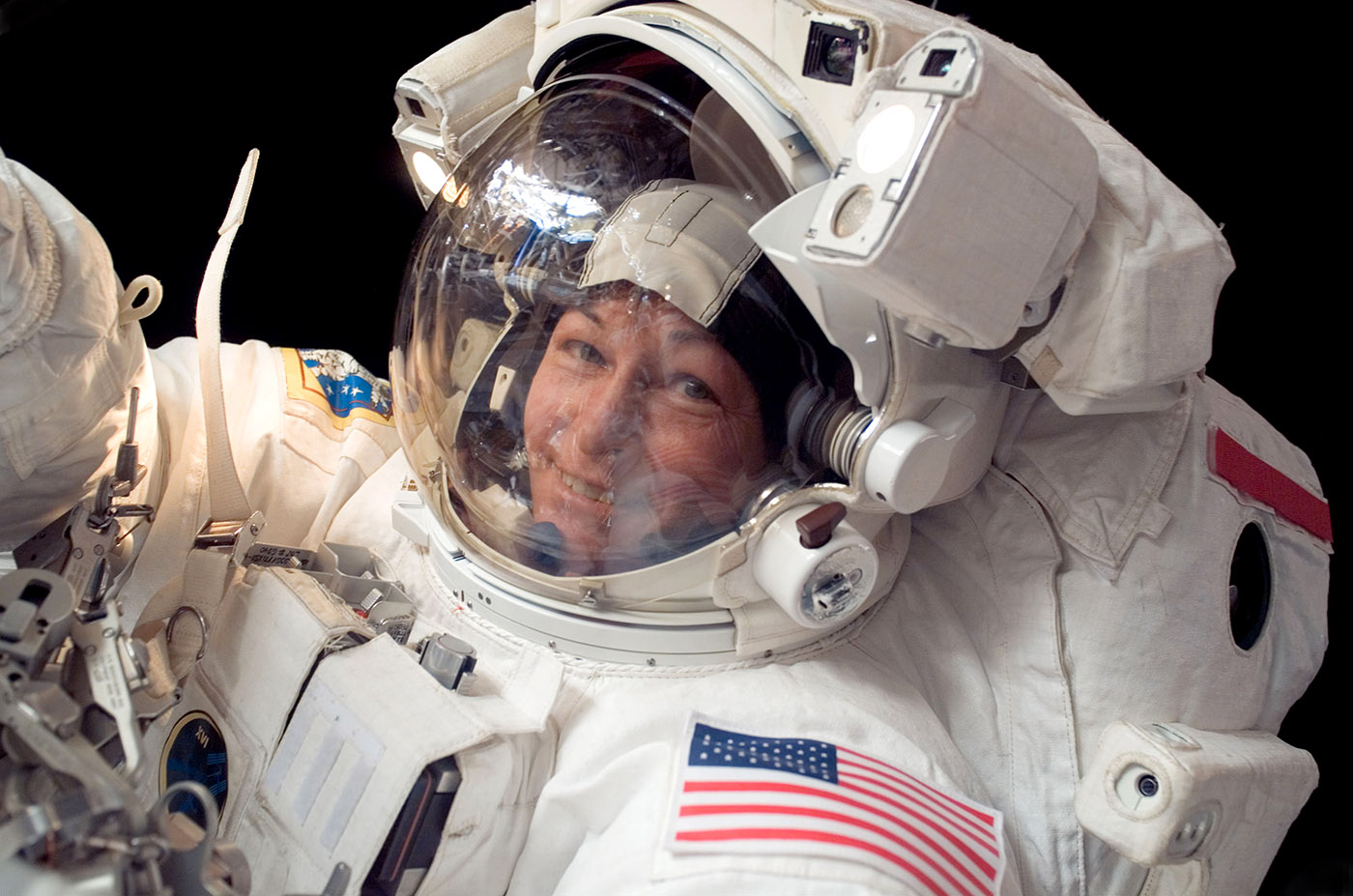
Expeditionary Skills for Life
In these activities, astronauts help students practice important life skills such as goal setting and teamwork!
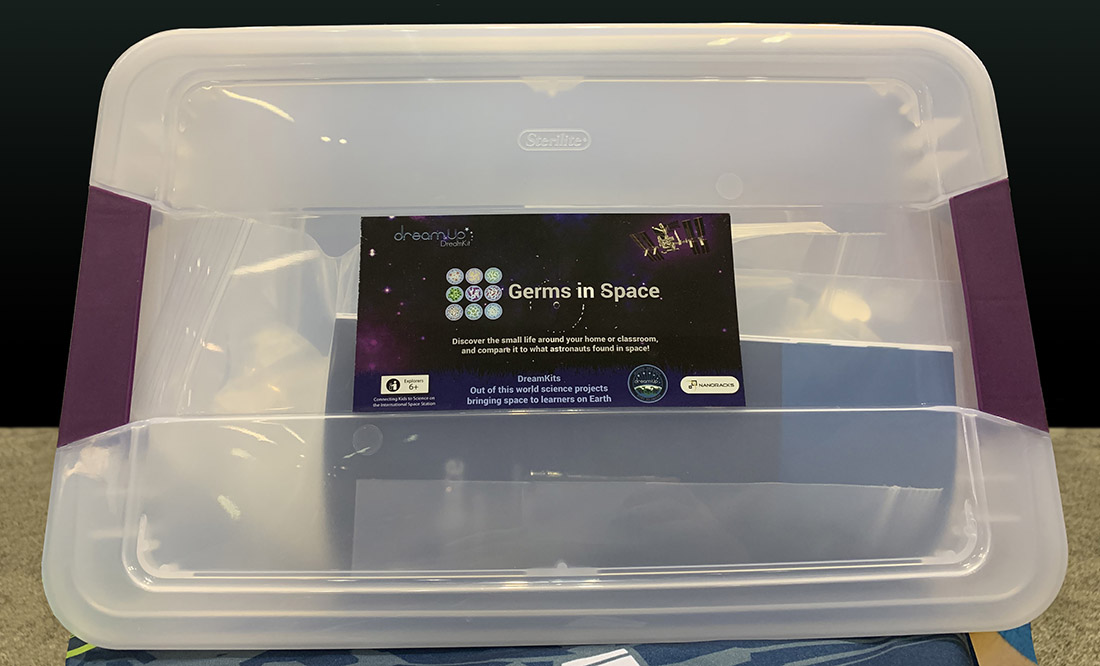
Germs in Space DreamKit
Collect, grow, and study microbes. Then compare your investigations with a real experiment done on the International Space Station!
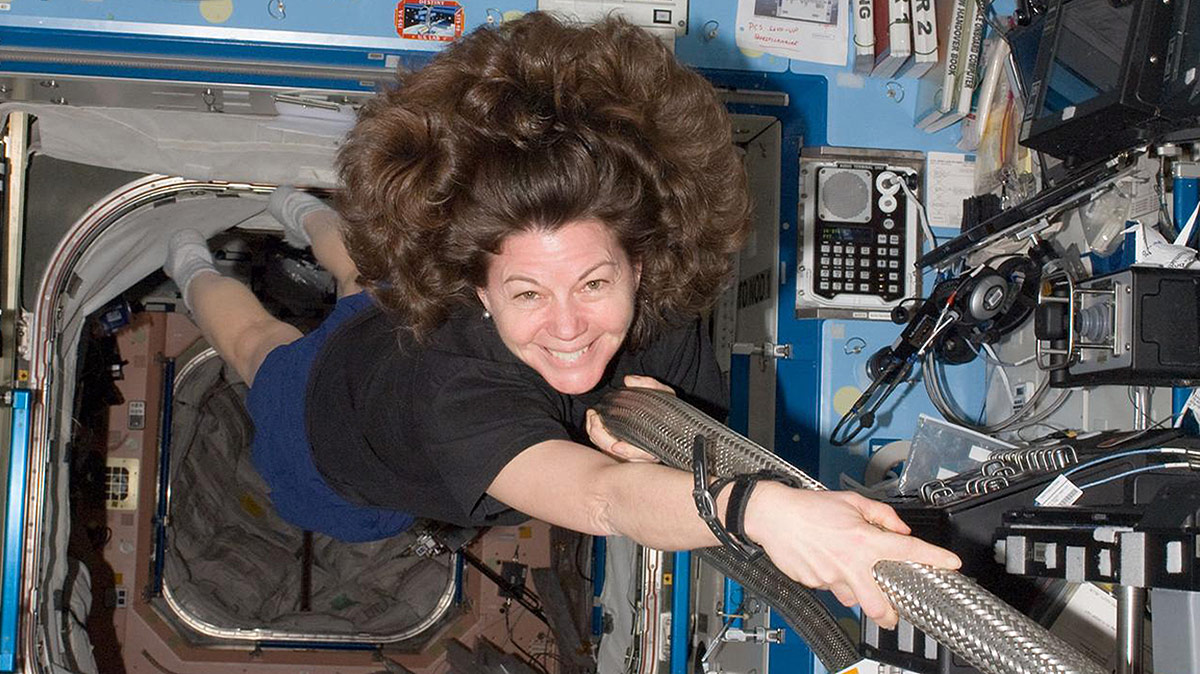
Get a Leg Up
A simple simulation that illustrates how the microgravity environment of space impacts the astronaut body

Inspector Detector
Use magnets as sensors to detect the positions of hidden objects and learn about the magnetic field of the moon

Invisible Forces
Design and build systems that use magnets to control speed and direction to learn about "gravity assist"

Keeping Your Cool
Students learn about the extravehicular mobility unit (EMU), or spacesuit, and experience the water-cooling technology that helps maintain the astronaut's…
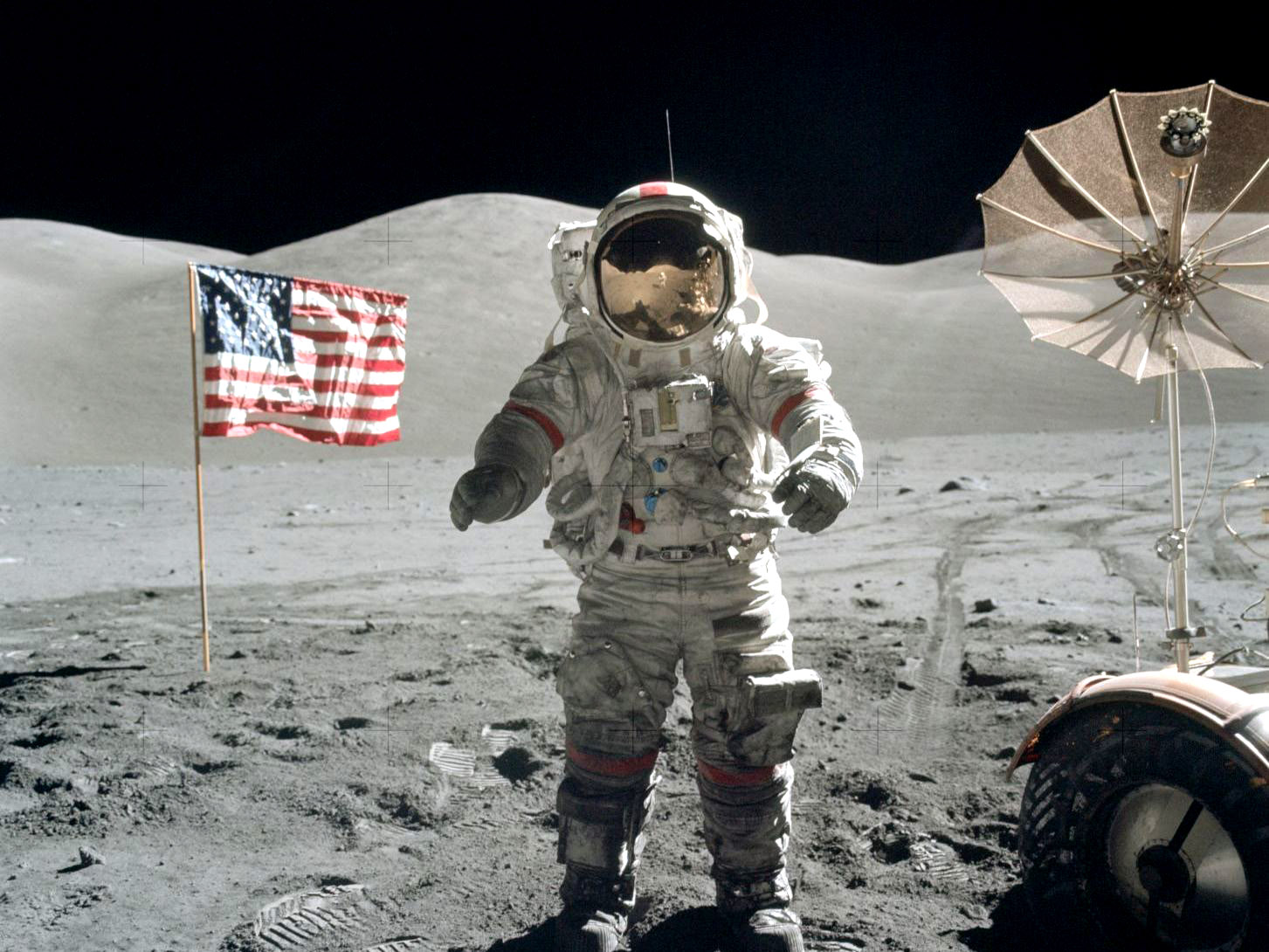
Lunar Nautics Educator Guide
Choose one or several activities from this comprehensive guide with activities connecting students with lunar exploration - perfect for the Artemis generation!
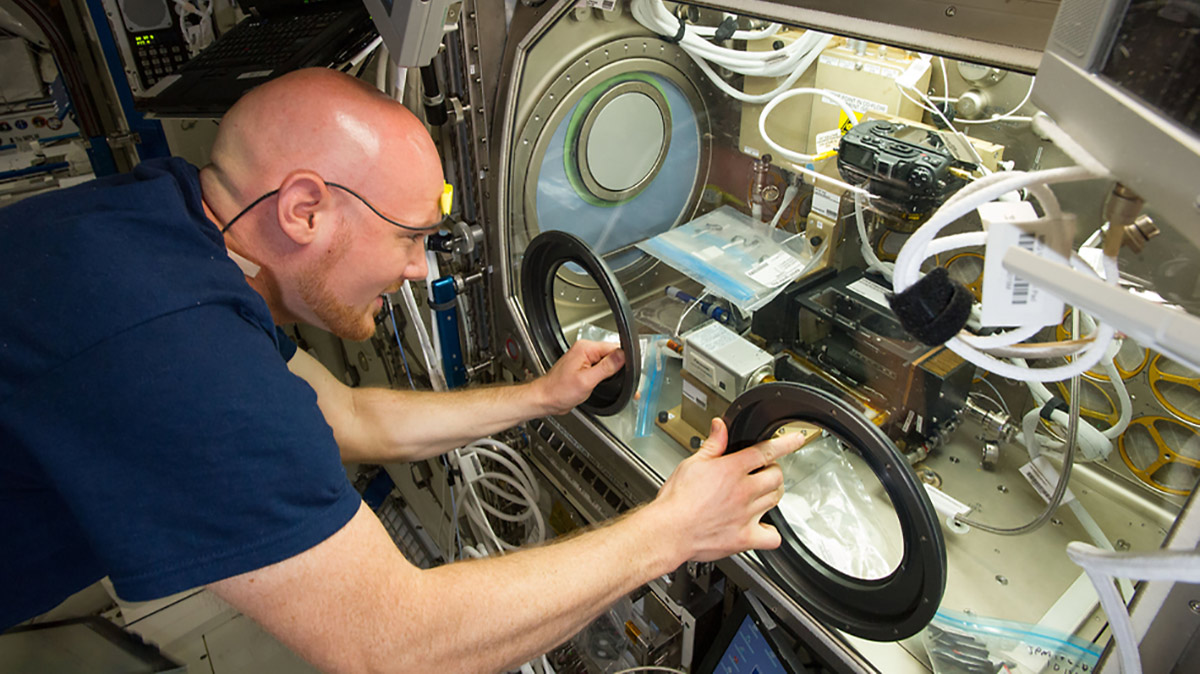
Microgravity: Earth and Space
Simulate microgravity in the classroom so students can study the behavior of crystals, fluids, and plants. Students learn about gravity on Earth and in orbit.
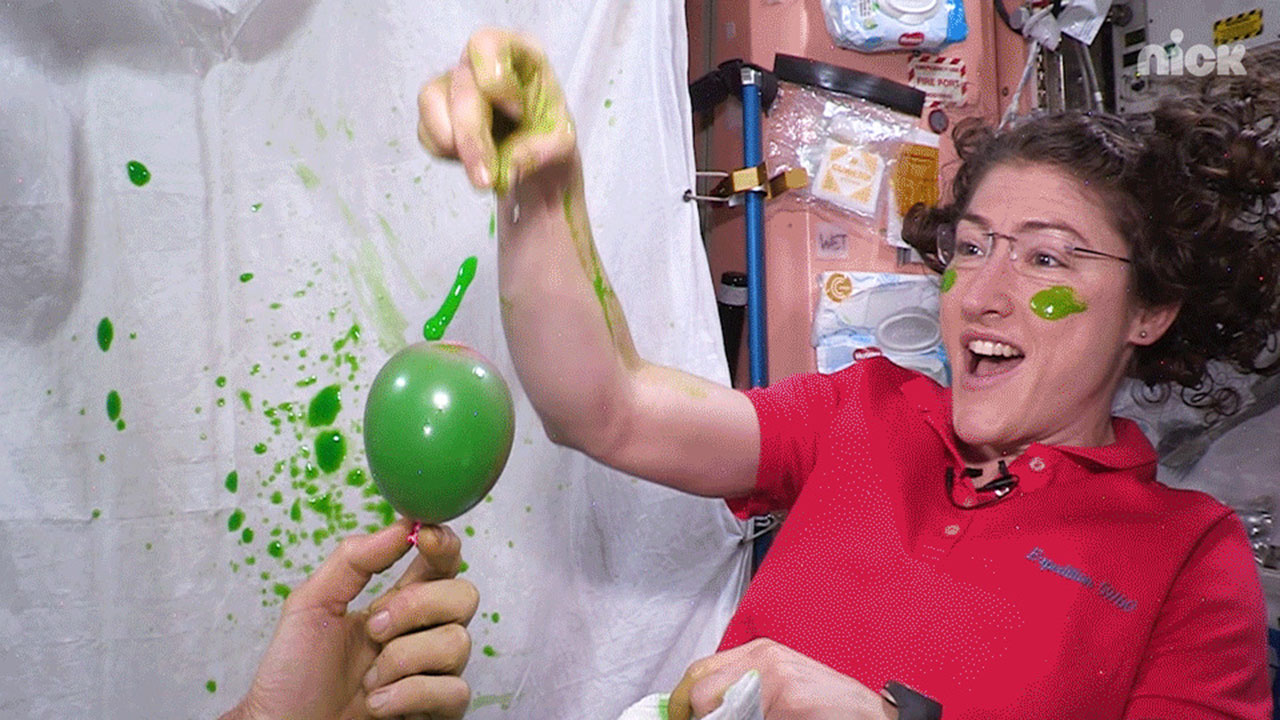
Nickelodeon Slime in Space Virtual Field Trip
Nickelodeon sent its iconic slime to the ISS where astronauts performed various demonstrations and captured it all on video!
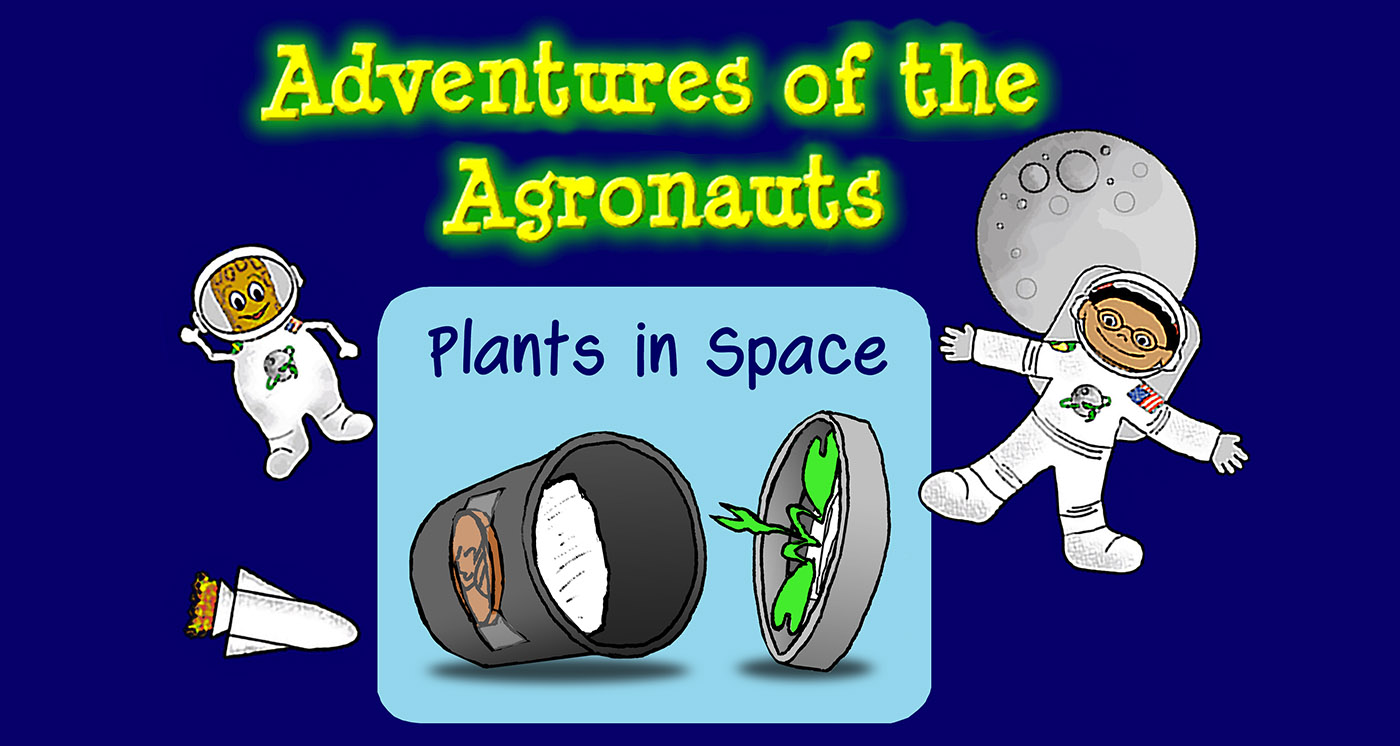
Plants in Space
Can plants tell which way is up? Students find out by setting up some radish seedlings in a dark, moist…

Plants in Space Teacher's Guide
Detailed teacher's guide from BioEd Online modeled after recent plant experiments on the ISS.
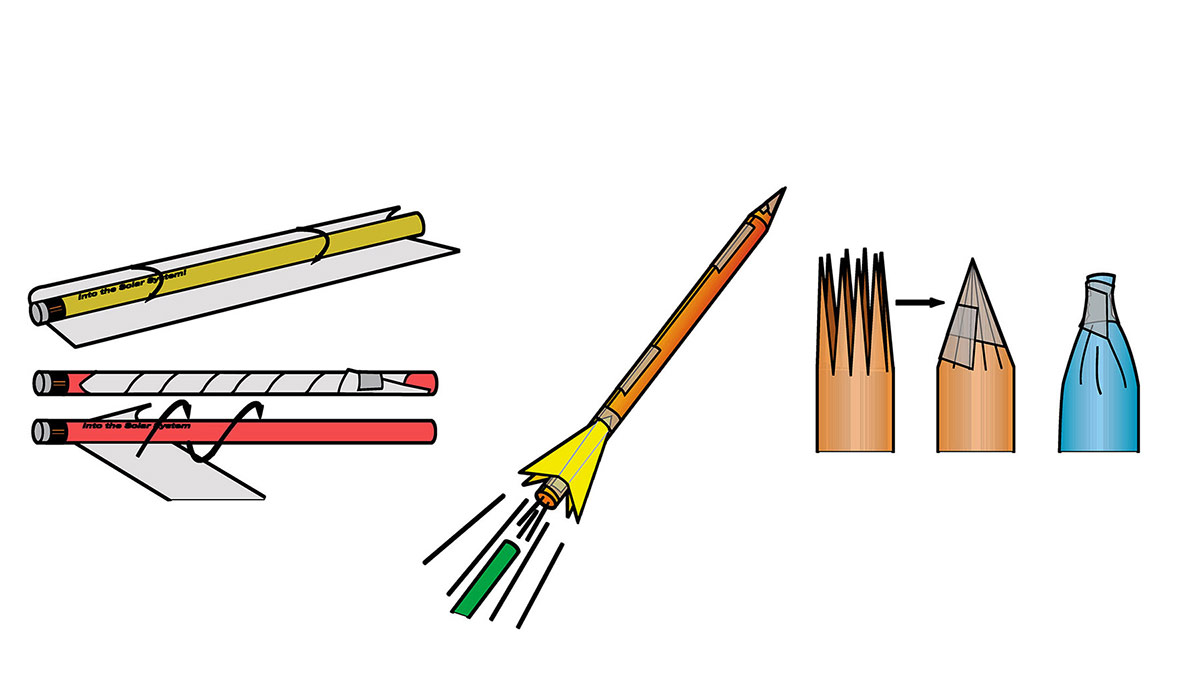
Rockets: 3, 2, 1, Puff!
Learn about rocket stability by constructing small "indoor" paper rockets, checking their flight stability, then launching them

Rover Parts
Introduces two of the three major components that go into every robot and how common robots really are
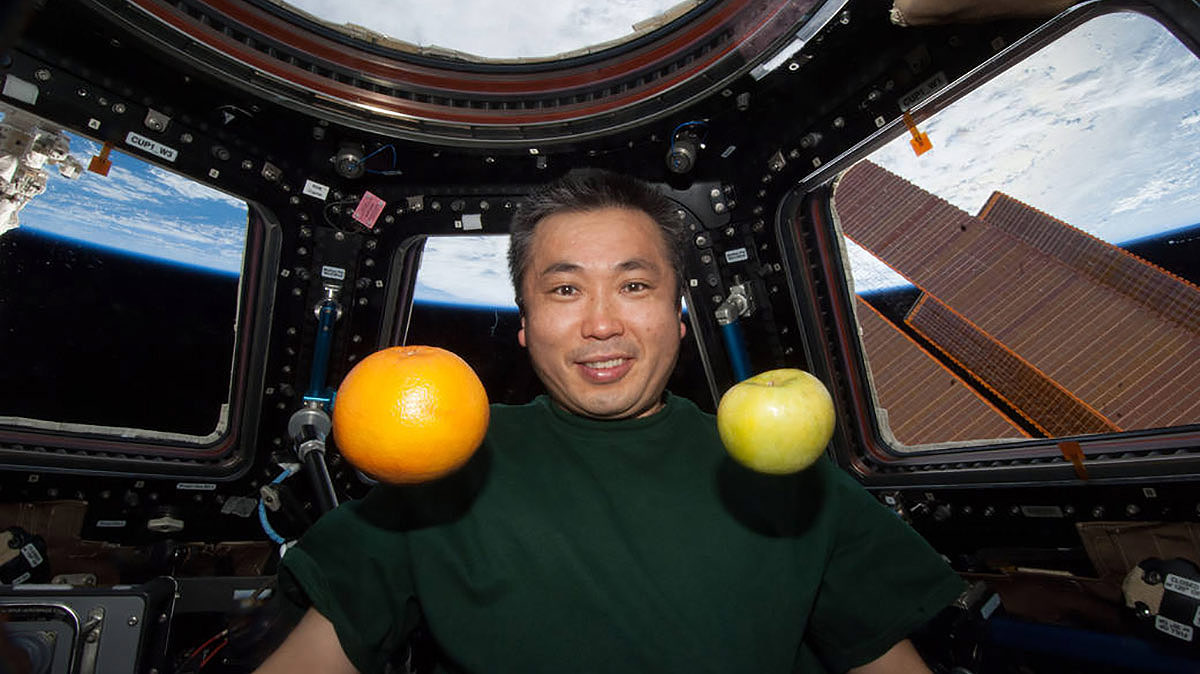
Space Food and Nutrition
Space food research meets the challenge of providing healthy food that tastes good and travels well in space
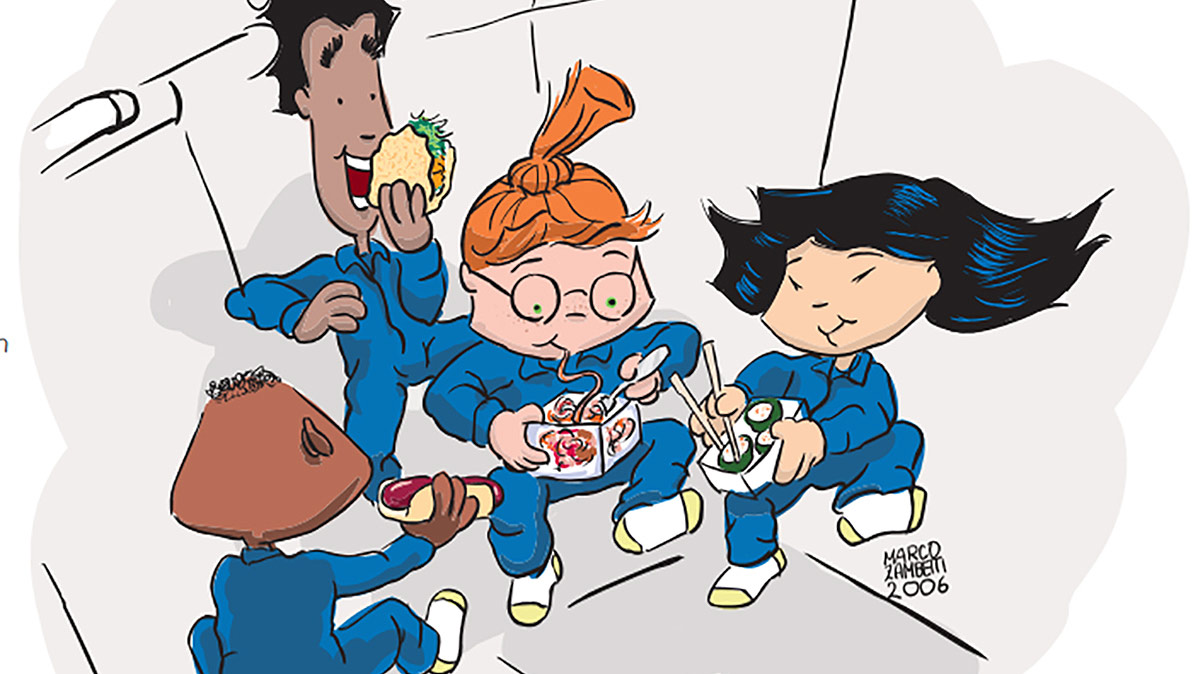
Space Nutrition
Detailed, well-researched information covering nutrition, exercise and other health considerations for space travel
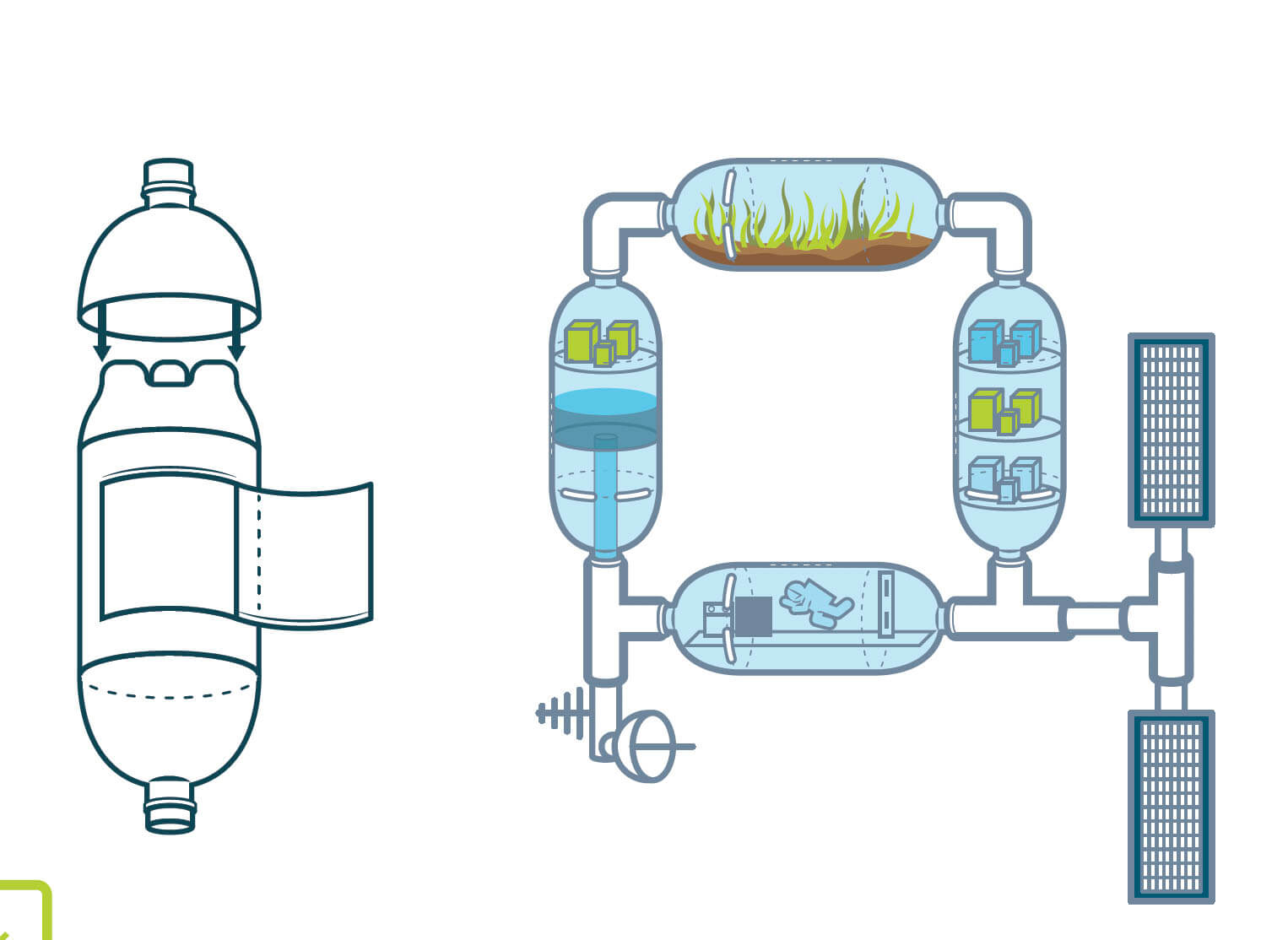
Space Station Explorers STEM Kit
These six hands-on activities introduce core concepts about the ISS. A great entry point for students and educators.
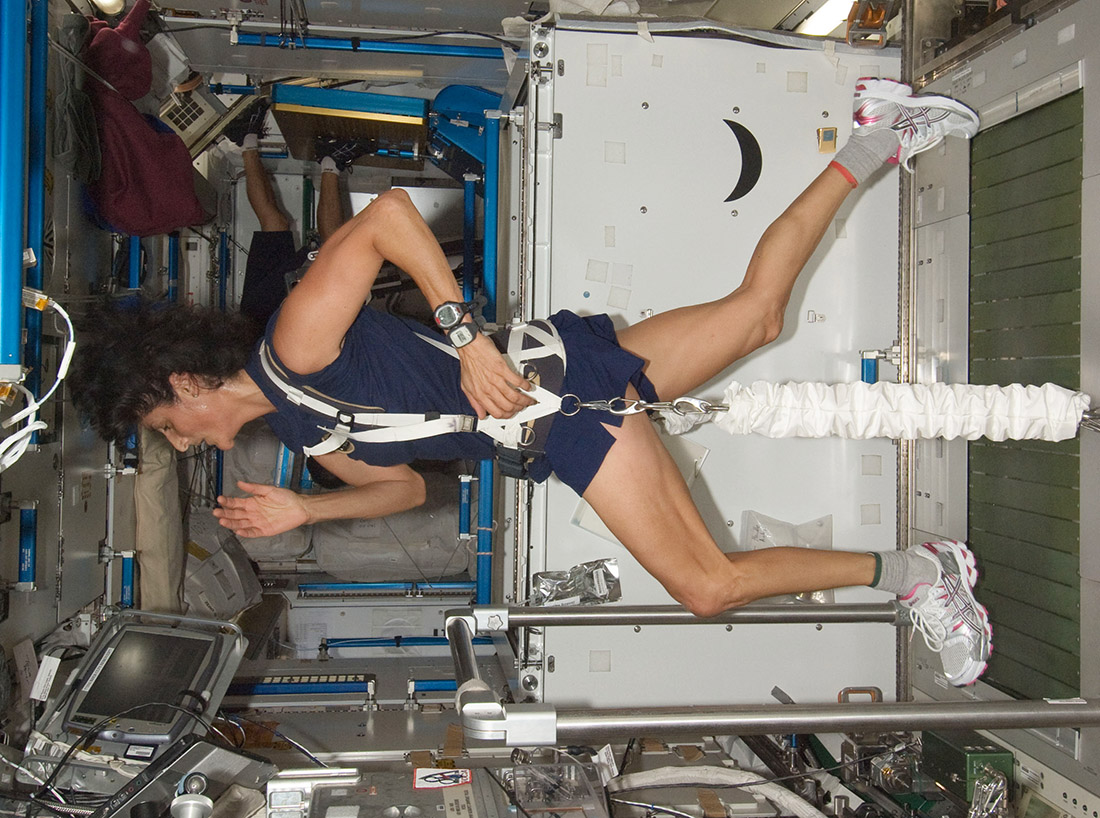
STEMonstration 1: Exercise
Learn why astronauts on the ISS must exercise to protect their bones and muscles.
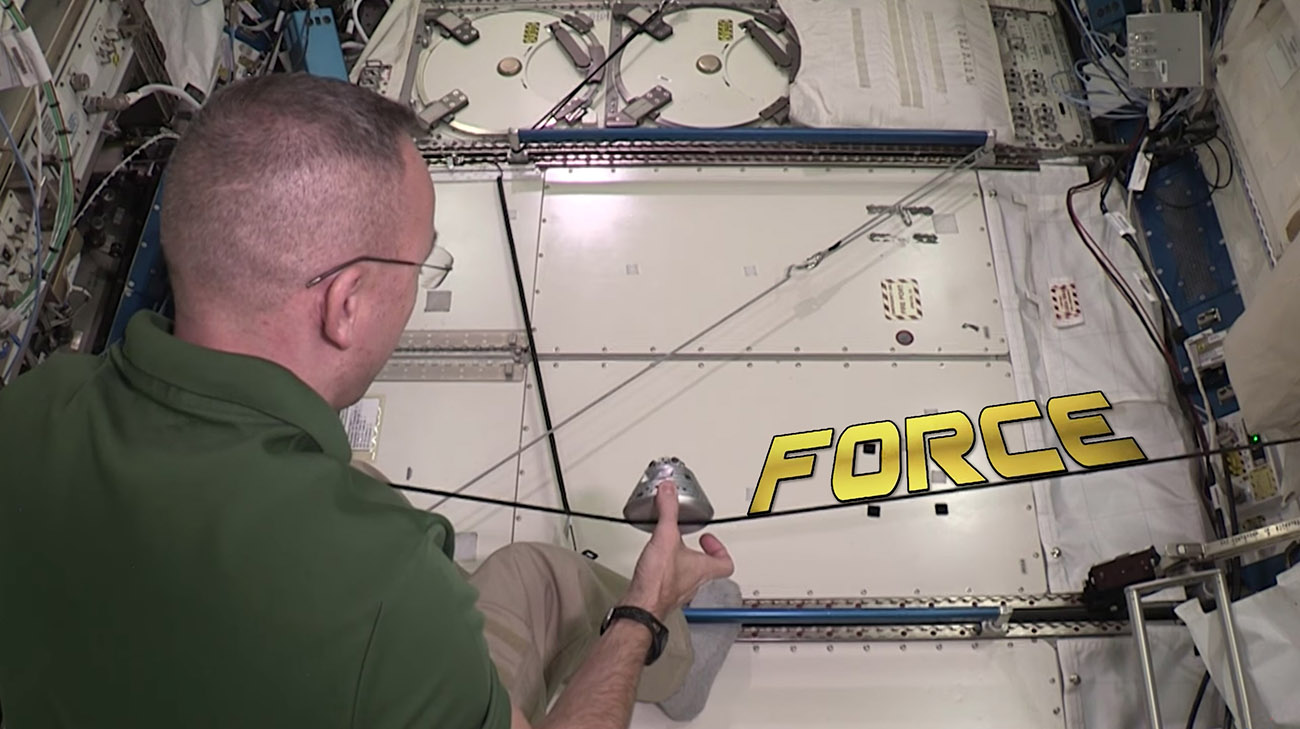
STEMonstration 2: Newton's Second Law of Motion
Astronauts demonstrate forces, mass, and acceleration.
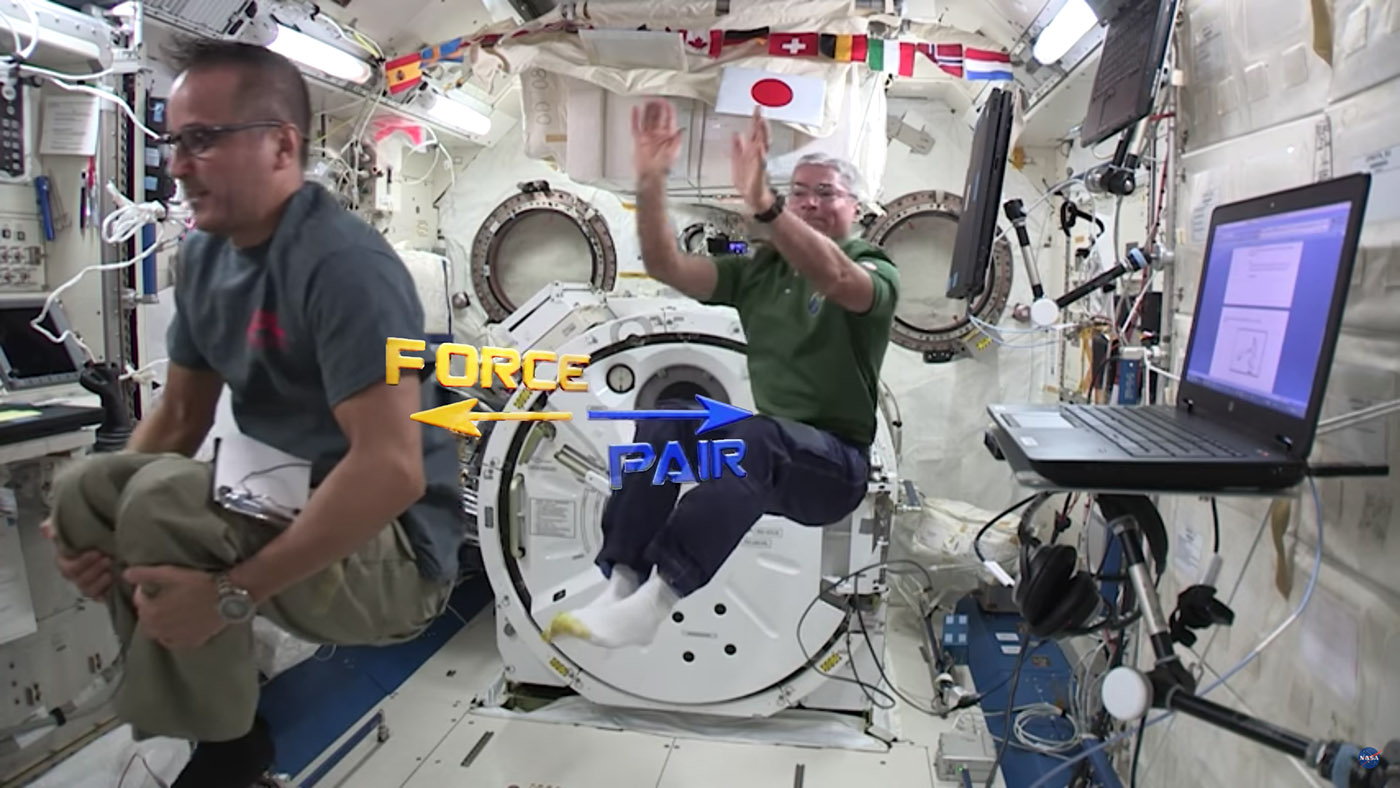
STEMonstration 3: Newton's Third Law of Motion
Newton's Third Law explains why a rocket shoots upward when it sends a stream of exhaust downward.
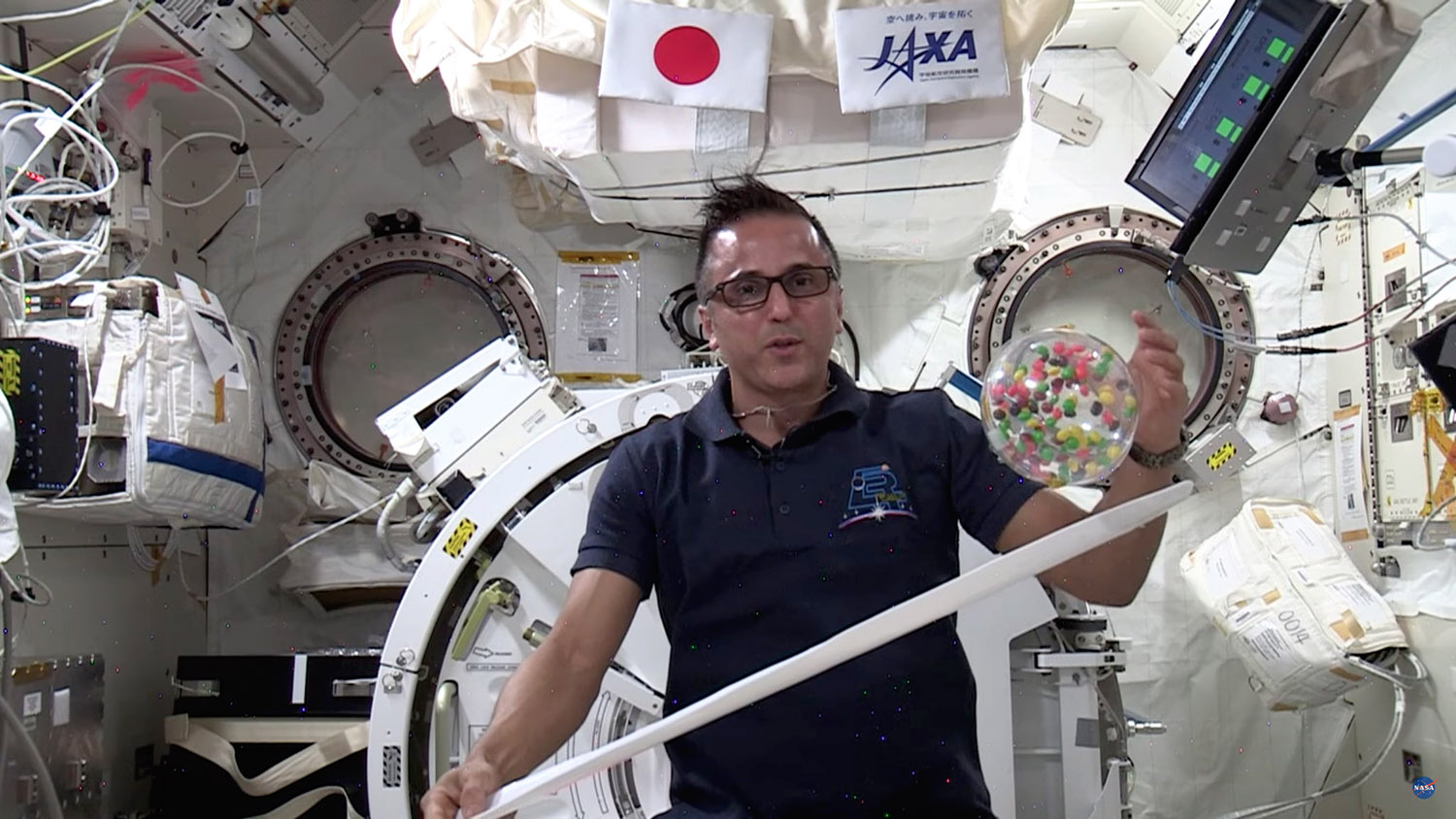
STEMonstration 4: Kinetic and Potential Energy
Explore kinetic and potential energy on the ISS with astronaut Joe Acaba.

LESSON PLAN FOR ENGLISH TEACHERS
Space travel.

Level: Intermediate (B1-B2)
Type of English: English for Teenagers
Tags: the future and space science and technology travel and leisure giving opinions explaining and speculating prepositions 13-15 years old 16-18 years old 18+ years old Article based Video talk
Publication date: 19/09/2022
The topic of this lesson is life on other planets and space tourism. Students will read an article about whether plants exist elsewhere in the universe and also watch a video about a space hotel. Students will learn level-appropriate vocabulary to talk about space and space tourism. Students will look at some ‘learning to learn’ strategies for essay writing and will have the opportunity to conduct some of their own research about space.
by Richard Moon
Perfect!!! ❤️
Leave a Comment
Student worksheet
Teacher lesson plan
Save lesson to
COURSE PLANS
This comprehensive course plan covers the full range of language needs – listening, role play, vocabulary development.
Worksheets in English for Teenagers (13-15) course plan
Type of English: English for Teenagers Level: Intermediate (B1-B2)
Make your lessons unforgettable
Did you know that your students can review the target language from our worksheets with our Expemo flashcard app? To let your student know, just enter their email address below (multiple emails can be separated with a comma).
- Primary Hub
- Art & Design
- Design & Technology
- Health & Wellbeing
- Secondary Hub
- Citizenship
- Primary CPD
- Secondary CPD
- Book Awards
- All Products
- Primary Products
- Secondary Products
- School Trips
- Trip Directory
- Trips by Subject
- Trips by Type
- Trips by Region
- Submit a Trip Venue
Trending stories
Top results.

- Teaching Resources
- Ks3 Physics Lesson Plan The Science Of Space Travel
KS3 Physics Lesson Plan – The Science of Space Travel
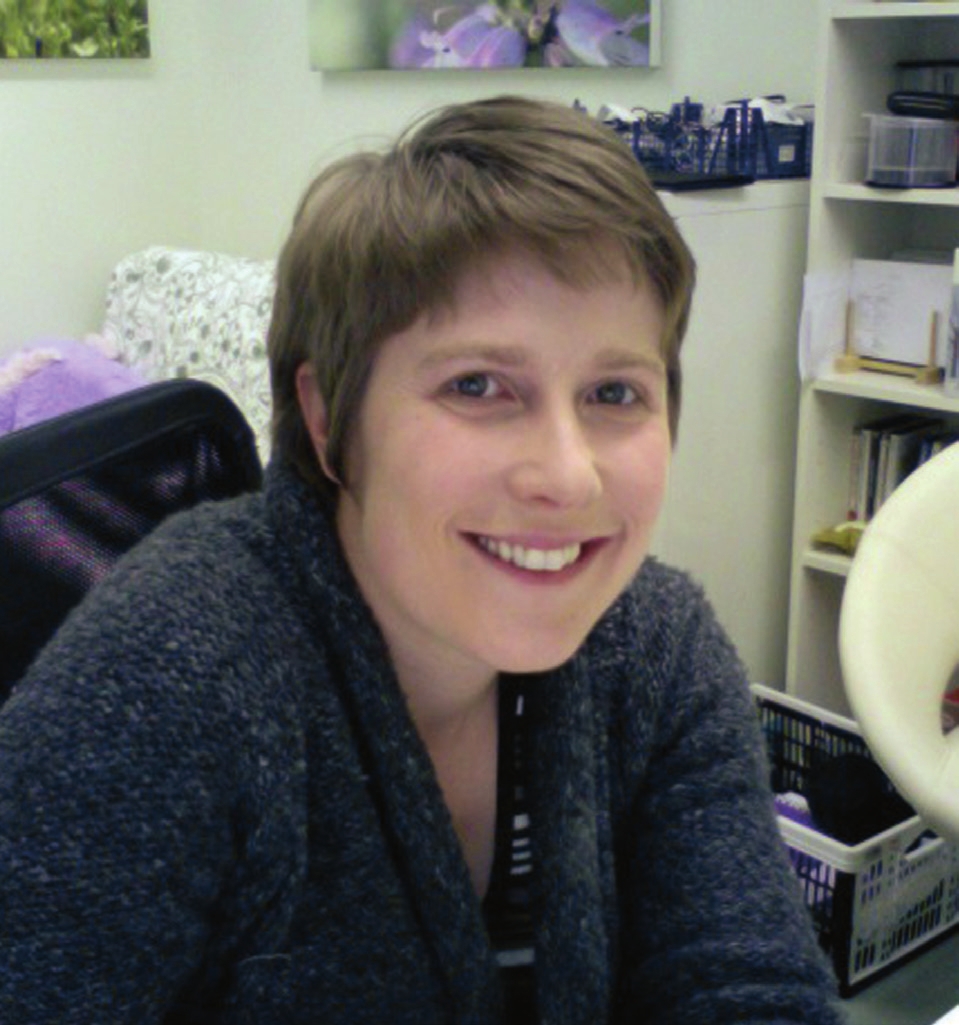
PDF lesson plan and 7 Word Doc worksheets
Broaden students’ horizons with a thrilling journey through the science of space travel.
In July 2019 we celebrate the 50th Anniversary of the first moon landing. It comes in the same year as the success of the NASA/SpaceX Dragon capsule’s visit to the ISS, the first partnership with a private company to come this close to yielding a manned mission.
It opens up new possibilities for space travel, with tourist visits into outer space also likely within the next few years. It may bring closer a manned mission to Mars – and so we need a new generation of astronauts ready to take their place in the stars.
This download includes the full PDF lesson plan and seven Word Document worksheets.
Why teach this?
The safe re-entry of the Dragon capsule, a joint venture by NASA and the private company SpaceX, during the 50th anniversary year of the first lunar landing, has changed the future of space exploration – your pupils might be among the next generation of astronauts.
Key curriculum links
Help your KS3 students to understand the challenges of space travel. Physics to design spacecraft and propulsion systems, biology to understand life support in space and psychology to explore the effects of extended stays in space.
Browse more resources for World Space Week .
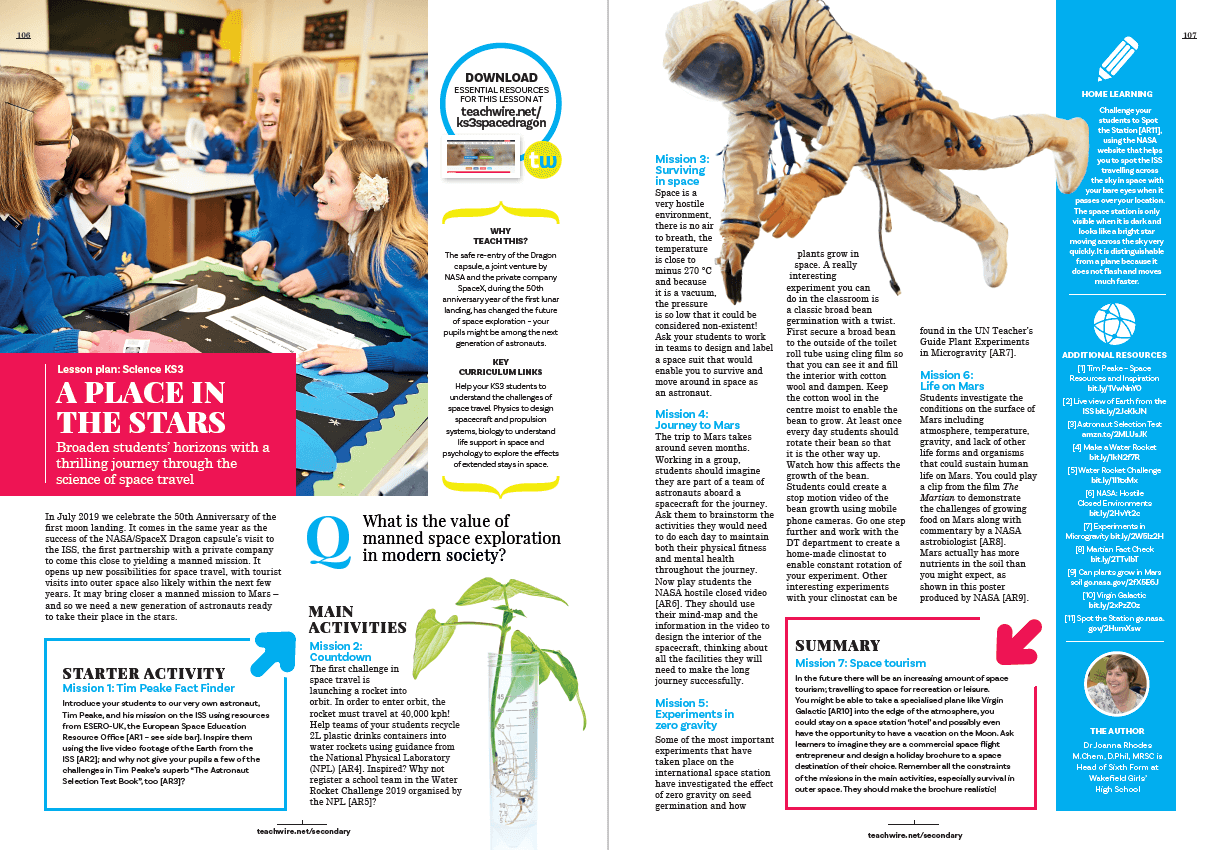
Similar resources
- Elizabeth Blackwell activity pack – 19th-century doctor and feminist
- Famous LGBT scientists – Neena Schwartz activity pack
- Black scientist – Dr Shirley Ann Jackson booklet
- Wind speed measurement – Make an anemometer with paper cups
- SEA LIFE Centre – Children’s activity packs (for ages 6 to 14)
Sign up to our newsletter
You'll also receive regular updates from Teachwire with free lesson plans, great new teaching ideas, offers and more. (You can unsubscribe at any time.)
Which sectors are you interested in?
Early Years
Thank you for signing up to our emails!
Explore teaching packs

Why join Teachwire?
Get what you need to become a better teacher with unlimited access to exclusive free classroom resources and expert CPD downloads.
Exclusive classroom resource downloads
Free worksheets and lesson plans
CPD downloads, written by experts
Resource packs to supercharge your planning
Special web-only magazine editions
Educational podcasts & resources
Access to free literacy webinars
Newsletters and offers
Create free account
By signing up you agree to our terms and conditions and privacy policy .
Already have an account? Log in here
Thanks, you're almost there
To help us show you teaching resources, downloads and more you’ll love, complete your profile below.
Welcome to Teachwire!
Set up your account.
Lorem ipsum dolor sit amet consectetur adipisicing elit. Commodi nulla quos inventore beatae tenetur.
I would like to receive regular updates from Teachwire with free lesson plans, great new teaching ideas, offers and more. (You can unsubscribe at any time.)
Log in to Teachwire
Not registered with Teachwire? Sign up for free
Reset Password
Remembered your password? Login here

Space Travel & Technology
Grades 5 to 8 - ebook - lesson plan.
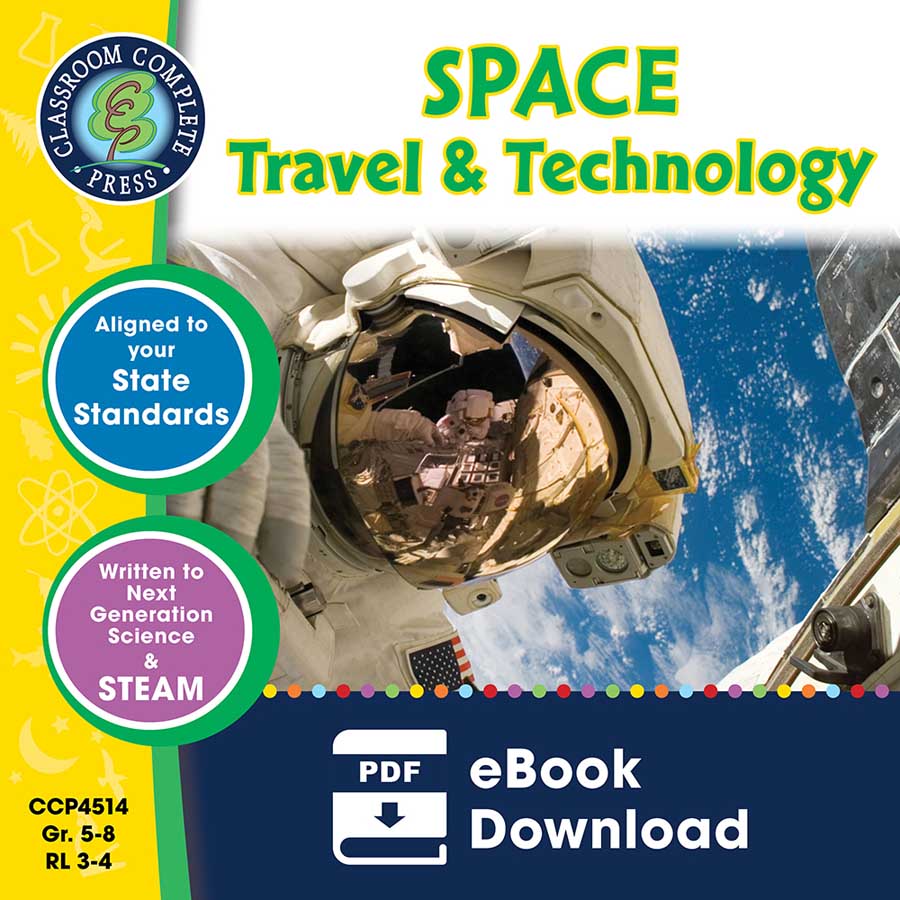
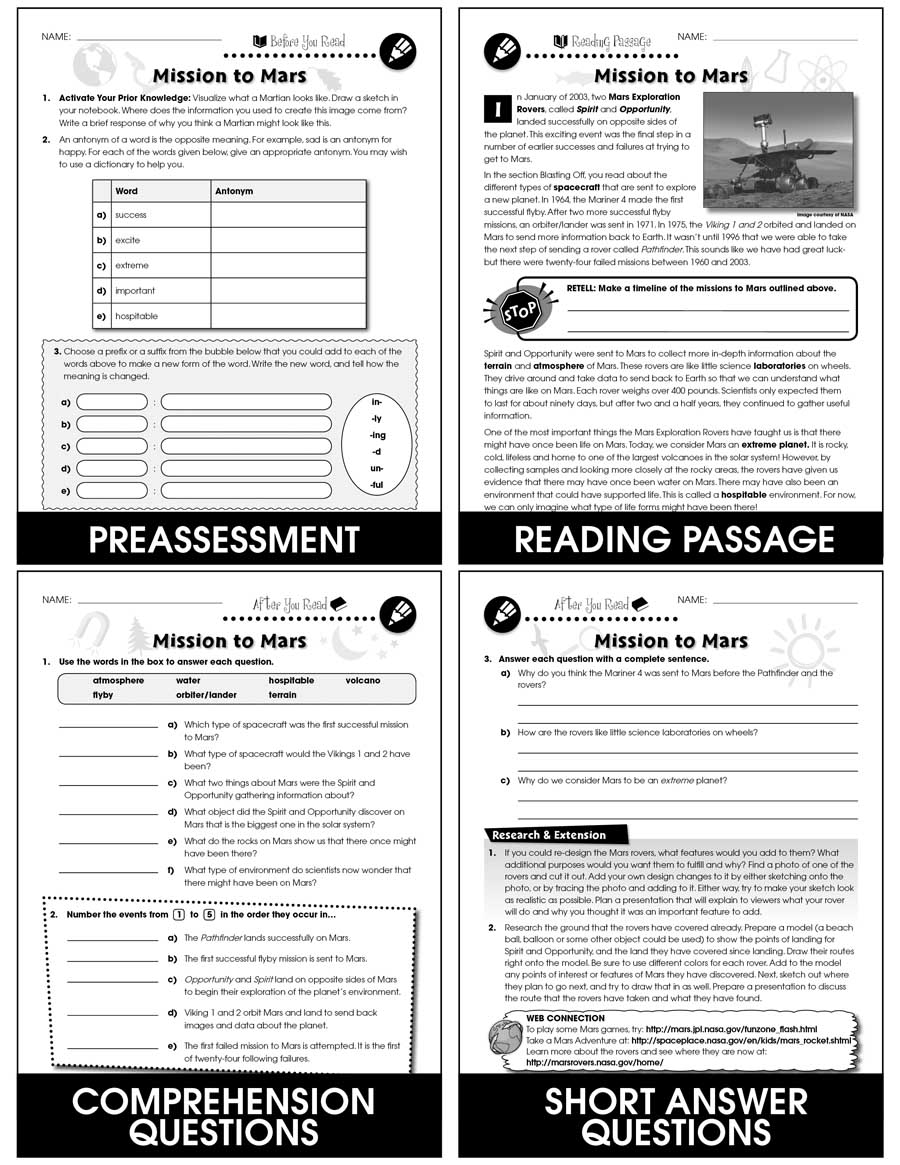
- Printable sample pages have opened in another window

his is perfect for my Space Travel unit. Thank you.
Fantastic product. Thanks.
I love everything about this packet! We used this to lead into our Human Space Exploration Unit for Middle School S.T.E.M. students. It was perfect. Thank you for sharing this!
Great resource! Reading, comprehension questions, and short answer questions were perfect for what I was looking for.
Great reading and research activities
Description
Product reviews.
Your review has been successfully submitted. Once it has been approved by our staff, it will be posted on our website.
This content comes from a hidden element on this page.
The inline option preserves bound JavaScript events and changes, and it puts the content back where it came from when it is closed. Click me, it will be preserved!
If you try to open a new ColorBox while it is already open, it will update itself with the new content.
Updating Content Example: Click here to load new content
Future of Space Tourism: SpaceX, Blue Origin, & Virgin Galactic
Student level.
Downloads: 816
Video Length: 3:28
Updated on: 04/27/2021
Lesson Time: 1–2 hrs.

Unlocking this lesson costs 1 credit and will give you full access to the printable lesson plan, interactive lesson plan, and teacher's guide. Click here to get credits.
Lesson Description
Video description, lesson activities.
Lesson Topics
Space Tourism, Space Travel
Lesson Preview
Similar lessons, ready to get this lesson plan.
You can get a lesson credit for $2.99 to download this lesson. We've also got other options for a better value.
Confirm Lesson Download
You can unlock the full lesson materials for Future of Space Tourism: SpaceX, Blue Origin, & Virgin Galactic for 1 credit. Are you sure?

Your download is ready. You can open your lesson from your device or in your browser. Enjoy your lesson!

Breaking News English Lesson: Space Exploration
Home | help this site, 2021 to be huge for space exploration (4th january, 2021).
- 27-page lesson (40 exercises)
- 2-page MINI lesson
- All 3 graded readings
- North American & British English
- 20 questions
- Listen & spell
- 4-speed reading
- Text jumble
- The / An / A
- Prepositions
- Missing letters
- Initials only
- Missing words
The Reading / Listening - Space Exploration - Level 6
Cosmologists, astronomers and space engineers are predicting that 2021 will be a great year for space exploration. An increasing number of countries and commercial companies are investing in technology to venture into the heavens. Entrepreneurs like SpaceX's Elon Musk and Virgin Galactic's Richard Branson are setting their sights on space tourism and sending astronauts to Mars. What once seemed like science fiction is quickly becoming space fact. Such are the advances in technology, we might no longer be surprised at news of asteroids being mined, Mars being colonised, or of new forms of holidays, such as getaway weekend breaks to the Moon.
The year will start with an exciting project that will help scientists better understand the universe. NASA will launch its Q-PACE probe on January the 15th. This will study the collision of small particles in space to provide an insight into how planets originally formed. A month later, NASA's Perseverance rover will land on Mars. This mission will test for signs of possible past microbial life. NASA said: "Returning samples of Mars to Earth has been a goal of planetary scientists since the early days of the space age." In October, the James Webb Space Telescope, the successor to the Hubble Telescope, will launch into space. Its mission is to observe the first galaxies that formed in the early universe.
Try the same news story at these easier levels:
Space Exploration - Level 4 or Space Exploration - Level 5
- https://www. salon.com /2020/12/29/all-the-space-missions-to-look-forward-to-in-2021/
- https://www. washingtonpost.com /technology/2020/12/30/2021-space-events-plan/
- https:// newatlas.com /space/year-space-2020-retrospective/
Make sure you try all of the online activities for this reading and listening - There are dictations, multiple choice activities, drag and drop activities, sentence jumbles, which word activities, text reconstructions, spelling, gap fills and a whole lot more. Please enjoy :-)
- E-mail this to a friend
--> 1. SPACE EXPLORATION: Students walk around the class and talk to other students about space exploration. Change partners often and share your findings. 2. CHAT: In pairs / groups, talk about these topics or words from the article. What will the article say about them? What can you say about these words and your life? cosmologist / astronomer / a great year / the heavens / space tourism / asteroids / project / the universe / collision / an insight / mission / microbial life / space / galaxy Have a chat about the topics you liked. Change topics and partners frequently. 3. THE HEAVENS: Students A strongly believe it is essential for humans to explore the heavens; Students B strongly believe it isn't. Change partners again and talk about your conversations. 4. EXPLORATION: How important is it to explore these things? Why? Complete this table with your partner(s). Change partners often and share what you wrote. How Important? Why? The Moon Mars The deep oceans The human brain Deep space Artificial intelligence MY e-BOOK See a sample 5. MARS: Spend one minute writing down all of the different words you associate with the word "Mars". Share your words with your partner(s) and talk about them. Together, put the words into different categories. 6. SCIENCE FICTION: Rank these with your partner. Put the best futuristic things at the top. Change partners often and share your rankings. Jetpacks Robot police Drone cars Moon holidays Reverse-ageing machine Teletransportation Computer-assisted brains 100% sustainability Vocabulary Paragraph 1 1. astronomer a. Saying or estimating that a specified thing will happen in the future. 2. predicting b. A person who organizes and operates a business or businesses, taking on greater than normal financial risks to do that. 3. venture c. The sky, especially where the sun, moon, stars, and planets are situated. 4. the heavens d. Dare to do something or go somewhere that may be dangerous. 5. entrepreneur e. An expert of student the branch of science which deals with space, and the physical universe. 6. asteroid f. Sent a group of settlers to a place and establish political control over it. 7. colonised g. A small rocky object orbiting the sun. Paragraph 2 8. launch h. A person or thing that takes over from another. 9. probe i. Sent a missile, satellite, or spacecraft on its course or into orbit. 10. collision j. Relating to or characteristic of a micro-organism. 11. insight k. A system of millions or billions of stars. 12. microbial l. An instance of one moving object or person striking violently against another. 13. successor m. A deep understanding of a person or thing. 14. galaxy n. An unmanned exploratory spacecraft designed to transmit information about its environment. Before reading / listening 1. TRUE / FALSE: Read the headline. Guess if 1-8 below are true (T) or false (F). Cosmologists doubt that 2021 will be great for space exploration. T / F Companies are investing in technology to get us to heaven. T / F The article says science fiction is turning out to be real life. T / F The article says we will not be surprised by our colonising Mars. T / F A NASA probe called Q-PACE will study the collision of small particles. T / F Another NASA probe will look for microbial life on the Moon. T / F NASA said scientists have wanted samples of Mars for a long time. T / F The Hubble Telescope will re-launch in October. T / F 2. SYNONYM MATCH: Match the following synonyms from the article. predicting commercial venture advances breaks project collision samples successor universe impact journey enterprise vacations cosmos forecasting specimens next-in-line private enterprise breakthroughs 3. PHRASE MATCH: (Sometimes more than one choice is possible.) investing in technology to venture setting their sights science fiction is quickly becoming surprised at news of asteroids getaway weekend the collision of small an insight into how planets test for signs of possible past planetary observe the first galaxies that formed microbial life being mined in the early universe into the heavens space fact scientists particles in space breaks to the Moon originally formed on space tourism Gap fill Put these words into the spaces in the paragraph below. venture mined once predicting getaway number fact sights
Cosmologists, astronomers and space engineers are (1) _____________________ that 2021 will be a great year for space exploration. An increasing (2) _____________________ of countries and commercial companies are investing in technology to (3) _____________________ into the heavens. Entrepreneurs like SpaceX's Elon Musk and Virgin Galactic's Richard Branson are setting their (4) _____________________ on space tourism and sending astronauts to Mars. What (5) _____________________ seemed like science fiction is quickly becoming space (6) _____________________. Such are the advances in technology, we might no longer be surprised at news of asteroids being (7) _____________________, Mars being colonised, or of new forms of holidays, such as (8) _____________________ weekend breaks to the Moon.
land project successor insight goal probe galaxies microbial
The year will start with an exciting (9) _____________________ that will help scientists better understand the universe. NASA will launch its Q-PACE (10) _____________________ on January the 15th. This will study the collision of small particles in space to provide an (11) _____________________ into how planets originally formed. A month later, NASA's Perseverance rover will (12) _____________________ on Mars. This mission will test for signs of possible past (13) _____________________ life. NASA said: "Returning samples of Mars to Earth has been a (14) _____________________ of planetary scientists since the early days of the space age." In October, the James Webb Space Telescope, the (15) _____________________ to the Hubble Telescope, will launch into space. Its mission is to observe the first (16) _____________________ that formed in the early universe.
Listening — Guess the answers. Listen to check.
1) commercial companies are investing in technology to ______ heavens a. adventure into the b. vent your into the c. venture into the d. vent tour into the 2) and Virgin Galactic's Richard Branson are setting their ______ a. sights son space b. sights Sun space c. sighs on space d. sights on space 3) What once seemed like science fiction is quickly ______ a. becoming space fact b. becoming space farce c. becoming space factual d. becoming space fat 4) the advances in technology, we might no longer be surprised at news of ______ a. asteroids be in mined b. asteroids being mined c. asteroids been mined d. asteroids bin mined 5) or of new forms of holidays, such as ______ a. get the way weekend breaks b. getaway weekend breaks c. get a way weekend breaks d. gets away weekend breaks
6) This will study the collision of small ______ a. particles Sun space b. particles on space c. particles in space d. particle sin space 7) rover will land on Mars. This mission will test for signs of possible ______ a. past microbe be all life b. past micro vial life c. past micro bile life d. past microbial life 8) Returning samples of Mars to Earth has been a goal ______ a. of plant a tree scientists b. of plan a tree scientists c. of planet tree scientists d. of planetary scientists 9) In October, the James Webb Space Telescope, the ______ Hubble Telescope a. successor to the b. successive to the c. succession to the d. success or to the 10) Its mission is to observe the first galaxies that formed in ______ a. the yearning universe b. the earthly universe c. the early universe d. the twirly universe
Listening — Listen and fill in the gaps
Cosmologists, astronomers and space engineers (1) ____________________ 2021 will be a great year for space exploration. An increasing number of countries and commercial companies (2) ____________________ technology to venture into the heavens. Entrepreneurs like SpaceX's Elon Musk and Virgin Galactic's Richard Branson are (3) ____________________ on space tourism and sending astronauts to Mars. What once seemed like science (4) ____________________ becoming space fact. Such are the advances in technology, we might no longer be surprised at (5) ____________________ being mined, Mars being colonised, or of new forms of holidays, (6) ____________________ weekend breaks to the Moon.
The year will start with (7) ____________________ that will help scientists better understand the universe. NASA will launch its Q-PACE probe on January the 15th. This will study (8) ____________________ small particles in space to provide an insight into how planets originally formed. A month later, NASA's Perseverance (9) ____________________ on Mars. This mission will test for signs of possible past microbial life. NASA said: "Returning samples of Mars to Earth has been a (10) ____________________ scientists since the early days of the space age." In October, the James Webb Space Telescope, (11) ____________________ the Hubble Telescope, will launch into space. Its mission is to observe the first galaxies (12) ____________________ the early universe.
Comprehension questions
- Who is predicting a great 2021 besides cosmologists and astronomers?
- Where do commercial companies want to venture into?
- Where do entrepreneurs want to send astronauts?
- What does the article say science fiction is becoming?
- Where might we be going for weekend breaks?
- What will NASA launch on January the 15th?
- In what month will NASA launch its rover?
- What will NASA's Perseverance rover test for signs of?
- When will the James Webb Space Telescope launch into space?
- What is the mission of the James Webb Space Telescope?
Multiple choice quiz
1) Who is predicting a great 2021 besides cosmologists and astronomers? a) coders b) enthusiasts c) space engineers d) astrologers 2) Where do commercial companies want to venture into? a) the heavens b) new markets c) time travel d) the past 3) Where do entrepreneurs want to send astronauts? a) Neptune b) another galaxy c) Mercury d) Mars 4) What does the article say science fiction is becoming? a) illogical b) space fact c) fantasy d) difficult to understand 5) Where might we be going for weekend breaks? a) Mount Everest b) Mars c) the Moon d) Saturn
6) What will NASA launch on January the 15th? a) a new website b) its Q-PACE probe c) the Perseverance rover d) a telescope 7) In what month will NASA launch its rover? a) October b) July c) March d) February 8) What will NASA's Perseverance rover test for signs of? a) water b) possible past microbial life c) human existence d) gas 9) When will the James Webb Space Telescope launch into space? a) October b) September c) August d) July 10) What is the mission of the James Webb Space telescope? a) to look at Earth b) to find new galaxies c) to find new light d) to observe the earliest galaxies
After reading / listening
1. WORD SEARCH: Look in your dictionary / computer to find collocates, other meanings, information, synonyms … for the words...
'space' ________________ ________________ ________________ ________________ ________________ ________________ ________________ ________________ and 'exploration' . ________________ ________________ ________________ ________________ ________________ ________________ ________________ ________________
• Share your findings with your partners.
• Make questions using the words you found.
• Ask your partner / group your questions.
2. ARTICLE QUESTIONS: Look back at the article and write down some questions you would like to ask the class about the text.
3. GAP FILL: In pairs / groups, compare your answers to this exercise. Check your answers. Talk about the words from the activity. Were they new, interesting, worth learning…?
4. VOCABULARY: Circle any words you do not understand. In groups, pool unknown words and use dictionaries to find their meanings.
5. TEST EACH OTHER: Look at the words below. With your partner, try to recall how they were used in the text:
predicting investing sights seemed surprised breaks start small later goal launch first
Student survey
Write five GOOD questions about this topic in the table. Do this in pairs. Each student must write the questions on his / her own paper. When you have finished, interview other students. Write down their answers.
(Please look at page 12 of the PDF to see a photocopiable example of this activity.)
Discussion - Space Exploration
STUDENT A’s QUESTIONS (Do not show these to student B)
- What did you think when you read the headline?
- What images are in your mind when you hear the word 'space'?
- What do you know about space?
- What do you want to know about space?
- How important is space exploration?
- How good is the job of an astronomer?
- How have commercial companies changed space exploration?
- What motivates space entrepreneurs?
- Does science fiction always become space fact?
- What do you think of getaway weekend breaks to the Moon?
STUDENT B’s QUESTIONS (Do not show these to student A)
- Did you like reading this article? Why/not?
- What do you think of when you hear the word 'exploration'?
- What do you think about what you read?
- How excited are you about space exploration?
- How do you think the early universe started?
- Why is space exploration important?
- What would happen if alien life came to Earth?
- What do you know about the Hubble Telescope?
- What do you think space exploration will be like in 100 years?
- What questions would you like to ask the astronomers?
Discussion — Write your own questions
(a) ________________ (b) ________________ (c) ________________ (d) ________________ (e) ________________
(f) ________________ (g) ________________ (h) ________________ (i) ________________ (j) ________________
Language — Cloze (Gap-fill)
Cosmologists, astronomers and space engineers are (1) ____ that 2021 will be a great year for space exploration. An (2) ____ number of countries and commercial companies are investing in technology to (3) ____ into the heavens. Entrepreneurs like SpaceX's Elon Musk and Virgin Galactic's Richard Branson are (4) ____ their sights on space tourism and sending astronauts to Mars. What once seemed like science fiction is quickly becoming space fact. Such are the advances (5) ____ technology, we might no longer be surprised at news of asteroids being mined, Mars being colonised, or of new forms of holidays, such (6) ____ getaway weekend breaks to the Moon.
The year will start with an exciting project that will help scientists better understand the universe. NASA will launch its Q-PACE (7) ____ on January the 15th. This will study the collision of small (8) ____ in space to provide an insight into how planets originally formed. A month later, NASA's Perseverance rover will land on Mars. This mission will test for signs of possible past (9) ____ life. NASA said: "Returning samples of Mars to Earth has been a goal of (10) ____ scientists since the early days of the space age." In October, the James Webb Space Telescope, the successor (11) ____ the Hubble Telescope, will launch into space. Its mission is to observe the first galaxies that formed in the (12) ____ universe.
Which of these words go in the above text?
- (a) predicts (b) predictive (c) prediction (d) predicting
- (a) increasable (b) increase (c) increases (d) increasing
- (a) vulture (b) venture (c) votive (d) vacuous
- (a) letting (b) betting (c) setting (d) wetting
- (a) at (b) in (c) on (d) as
- (a) as (b) is (c) was (d) has
- (a) prove (b) probe (c) prose (d) prone
- (a) particles (b) sights (c) sighting (d) sightseer
- (a) macro (b) microbial (c) macro (d) mic
- (a) planter (b) planting (c) planetary (d) plants
- (a) at (b) of (c) to (d) on
- (a) slow (b) late (c) fast (d) early
Paragraph 1
- Cosmologists, rsroaenmots and space engineers
- micalomrec companies
- enevutr into the heavens
- nrrpereeesnut like SpaceX's Elon Musk
- adascven in technology
- news of odsaretsi being mined
Paragraph 2
- study the oliislnco of small particles
- provide an tiinghs into
- signs of possible past acomrbiil life
- a goal of laaetrnyp scientists
- the ousserccs to the Hubble Telescope
- the first axagslei that formed
Put the text back together
(...) advances in technology, we might no longer be surprised at news of asteroids being mined, Mars being (...) into space. Its mission is to observe the first galaxies that formed in the early universe. (...) colonised, or of new forms of holidays, such as getaway weekend breaks to the Moon. (...) in technology to venture into the heavens. Entrepreneurs like SpaceX's Elon Musk and ( 1 ) Cosmologists, astronomers and space engineers are predicting that 2021 will be a great year (...) in space to provide an insight into how planets originally formed. A month later, NASA's Perseverance rover will land (...) The year will start with an exciting project that will help scientists better understand the (...) for space exploration. An increasing number of countries and commercial companies are investing (...) Mars. What once seemed like science fiction is quickly becoming space fact. Such are the (...) universe. NASA will launch its Q-PACE probe on January the 15th. This will study the collision of small particles (...) on Mars. This mission will test for signs of possible past microbial life. NASA said: "Returning samples of Mars (...) age." In October, the James Webb Space Telescope, the successor to the Hubble Telescope, will launch (...) to Earth has been a goal of planetary scientists since the early days of the space (...) Virgin Galactic's Richard Branson are setting their sights on space tourism and sending astronauts to
Put the words in the right order
- great that year . 2021 a will Predicting be
- technology in into to venture Investing the heavens .
- becoming space quickly fiction Science is fact .
- surprised We no be news . at longer might
- to Such the Moon . as breaks getaway weekend
- exciting project . The with an will start year
- originally into insight formed . planets an Provide how
- of signs life . microbial for Test possible past
- Since early space of the age . days the
- early the Galaxies that universe . formed in
Circle the correct word (20 pairs)
Cosmologists, astronomers and space engineers are predictive / predicting that 2021 will be a great year for space exploration. An increasing numeral / number of countries and commercial companies are investing on / in technology to venture into the heavens. Entrepreneurs like SpaceX's Elon Musk and Virgin Galactic's Richard Branson are setting their sights / sounds on space tourism and sending astronauts to / at Mars. What once seemed like science fiction be / is quickly becoming space fact / farce . Such are the advances on / in technology, we might no longer be surprise / surprised at news of asteroids being mined, Mars being colonised, or of new forms of holidays, such as getaway weekend broken / breaks to the Moon.
The year will start with an exciting / excitement project that will help scientists better understand the universe. NASA will launch its Q-PACE prove / probe on January the 15th. This will study the collide / collision of small particles in space to provide an insight / inside into how planets originally formed. A month later, NASA's Perseverance driver / rover will land on Mars. This mission will test for signs of possible post / past microbial life. NASA said: "Returning samples of Mars to Earth has been a goal of plant / planetary scientists since the early days of the space age / year ." In October, the James Webb Space Telescope, the success / successor to the Hubble Telescope, will launch into space. Its mission is to observe the first galaxies that formed in the early / fast universe.
Talk about the connection between each pair of words in italics, and why the correct word is correct.
Insert the vowels (a, e, i, o, u)
C_sm_l_g_sts, _str_n_m_rs _nd sp_c_ _ng_n__rs _r_ pr_d_ct_ng th_t 2021 w_ll b_ _ gr__t y__r f_r sp_c_ _xpl_r_t__n. _n _ncr__s_ng n_mb_r _f c__ntr__s _nd c_mm_rc__l c_mp_n__s _r_ _nv_st_ng _n t_chn_l_gy t_ v_nt_r_ _nt_ th_ h__v_ns. _ntr_pr_n__rs l_k_ Sp_c_X's _l_n M_sk _nd V_rg_n G_l_ct_c's R_ch_rd Br_ns_n _r_ s_tt_ng th__r s_ghts _n sp_c_ t__r_sm _nd s_nd_ng _str_n__ts t_ M_rs. Wh_t _nc_ s__m_d l_k_ sc__nc_ f_ct__n _s q__ckly b_c_m_ng sp_c_ f_ct. S_ch _r_ th_ _dv_nc_s _n t_chn_l_gy, w_ m_ght n_ l_ng_r b_ s_rpr_s_d _t n_ws _f _st_r__ds b__ng m_n_d, M_rs b__ng c_l_n_s_d, _r _f n_w f_rms _f h_l_d_ys, s_ch _s g_t_w_y w__k_nd br__ks t_ th_ M__n.
Th_ y__r w_ll st_rt w_th _n _xc_t_ng pr_j_ct th_t w_ll h_lp sc__nt_sts b_tt_r _nd_rst_nd th_ _n_v_rs_. N_S_ w_ll l__nch _ts Q-P_C_ pr_b_ _n J_n__ry th_ 15th. Th_s w_ll st_dy th_ c_ll_s__n _f sm_ll p_rt_cl_s _n sp_c_ t_ pr_v_d_ _n _ns_ght _nt_ h_w pl_n_ts _r_g_n_lly f_rm_d. _ m_nth l_t_r, N_S_'s P_rs_v_r_nc_ r_v_r w_ll l_nd _n M_rs. Th_s m_ss__n w_ll t_st f_r s_gns _f p_ss_bl_ p_st m_cr_b__l l_f_. N_S_ s__d: "R_t_rn_ng s_mpl_s _f M_rs t_ __rth h_s b__n _ g__l _f pl_n_t_ry sc__nt_sts s_nc_ th_ __rly d_ys _f th_ sp_c_ _g_." _n _ct_b_r, th_ J_m_s W_bb Sp_c_ T_l_sc_p_, th_ s_cc_ss_r t_ th_ H_bbl_ T_l_sc_p_, w_ll l__nch _nt_ sp_c_. _ts m_ss__n _s t_ _bs_rv_ th_ f_rst g_l_x__s th_t f_rm_d _n th_ __rly _n_v_rs_.
Punctuate the text and add capitals
cosmologists astronomers and space engineers are predicting that 2021 will be a great year for space exploration an increasing number of countries and commercial companies are investing in technology to venture into the heavens entrepreneurs like spacexs elon musk and virgin galactics richard branson are setting their sights on space tourism and sending astronauts to mars what once seemed like science fiction is quickly becoming space fact such are the advances in technology we might no longer be surprised at news of asteroids being mined mars being colonised or of new forms of holidays such as getaway weekend breaks to the moon
the year will start with an exciting project that will help scientists better understand the universe nasa will launch its qpace probe on january the 15th this will study the collision of small particles in space to provide an insight into how planets originally formed a month later nasas perseverance rover will land on mars this mission will test for signs of possible past microbial life nasa said returning samples of mars to earth has been a goal of planetary scientists since the early days of the space age in october the james webb space telescope the successor to the hubble telescope will launch into space its mission is to observe the first galaxies that formed in the early universe
Put a slash (/) where the spaces are
Cosmologists,astronomersandspaceengineersarepredictingthat20 21willbeagreatyearforspaceexploration.Anincreasingnumberofcou ntriesandcommercialcompaniesareinvestingintechnologytoventure intotheheavens.EntrepreneurslikeSpaceX'sElonMuskandVirginGala ctic'sRichardBransonaresettingtheirsightsonspacetourismandsendi ngastronautstoMars.Whatonceseemedlikesciencefictionisquicklybe comingspacefact.Sucharetheadvancesintechnology,wemightnolon gerbesurprisedatnewsofasteroidsbeingmined,Marsbeingcolonised, orofnewformsofholidays,suchasgetawayweekendbreakstotheMoon .Theyearwillstartwithanexcitingprojectthatwillhelpscientistsbetteru nderstandtheuniverse.NASAwilllaunchitsQ-PACEprobeonJanuaryt he15th.Thiswillstudythecollisionofsmallparticlesinspacetoprovidea ninsightintohowplanetsoriginallyformed.Amonthlater,NASA'sPerse veranceroverwilllandonMars.Thismissionwilltestforsignsofpossiblep astmicrobiallife.NASAsaid:"ReturningsamplesofMarstoEarthhasbee nagoalofplanetaryscientistssincetheearlydaysofthespaceage."InOc tober,theJamesWebbSpaceTelescope,thesuccessortotheHubbleTel escope,willlaunchintospace.Itsmissionistoobservethefirstgalaxiest hatformedintheearlyuniverse.
Free writing
Write about space exploration for 10 minutes. Comment on your partner’s paper.
_____________________________________________________________________________
Academic writing
It is important to spend lots of money on space exploration. Discuss.
1. VOCABULARY EXTENSION: Choose several of the words from the text. Use a dictionary or Google's search field (or another search engine) to build up more associations / collocations of each word. 2. INTERNET: Search the Internet and find out more about this news story. Share what you discover with your partner(s) in the next lesson. 3. SPACE EXPLORATION: Make a poster about space exploration. Show your work to your classmates in the next lesson. Did you all have similar things? 4. MONEY: Write a magazine article about spending more money on space exploration. Include imaginary interviews with people who are for and against this. Read what you wrote to your classmates in the next lesson. Write down any new words and expressions you hear from your partner(s). 5. WHAT HAPPENED NEXT? Write a newspaper article about the next stage in this news story. Read what you wrote to your classmates in the next lesson. Give each other feedback on your articles. 6. LETTER: Write a letter to an expert on space exploration. Ask him/her three questions about it. Give him/her three of your ideas on what to explore. Read your letter to your partner(s) in your next lesson. Your partner(s) will answer your questions.
(Please look at page 26 of the PDF to see a photocopiable example of this activity.)
Back to the top
Help Support This Web Site
- Please consider helping Breaking News English.com
Sean Banville's Book
- Download a sample of my book "1,000 Ideas & Activities for Language Teachers".

IMAGES
VIDEO
COMMENTS
Instructions: To make an acrostic poem, write the words space travel vertically on a piece of paper. Then, use each letter in those words as the first letter of a different word or phrase related to space travel. For example, S = scientific experiments, P = probing the universe, A = aerospace engineers, etc.)
Space Exploration Lesson Plans. (13 results) Space exploration is an exciting and wide-ranging area. Getting into space (and back down) is hard, involving rockets and launch vehicles, satellites, spacecraft, re-entry systems, landers and rovers, robots, and orbital mechanics, not to mention hypothetical technologies like space elevators and ...
This free ESL lesson plan on space travel has been designed for adults and young adults at an intermediate (B1/B2) to advanced (C1/C2) level and should last around 45 to 60 minutes for one student. In 1961, the human race ventured into space for the first time when Yuri Gagarin completed an orbit of Earth. Eight years later, in 1969, the first ...
Objectives: The students will learn about the history of space exploration. The students will be able to define the terms: astronaut and cosmonaut. The students will learn the requirements to be an astronaut. The students will be able to name famous astronauts and explain their contributions to space exploration.
Educator Guides, Lesson Plans / Activities. These seven hands-on science activities are aligned to Next Generation Science Standards. The activities help students understand the dangers associated with space travel, how our bodies work differently in space than on Earth and how robots can be used to do tasks in hazardous places. Activities ...
Learn how scientists and engineers tackle the question of where to land on Mars in this 60-second video. Subject Engineering. Grades K-12. Time 1 min. 3. Design Your Spacecraft. Now that a mission has been planned, students learn about and build spacecraft, including satellites and rovers, as well as a robotic arm.
Lesson Plan Grade: 3rd-5th. Students are introduced to the engineering challenges involved with interplanetary space travel. In particular, they learn about the gravity assist or "slingshot" maneuver often used by engineers to send spacecraft to the outer planets.
Middle School, Space Exploration Lesson Plans. (9 results) Space exploration is an exciting and wide-ranging area. Getting into space (and back down) is hard, involving rockets and launch vehicles, satellites, spacecraft, re-entry systems, landers and rovers, robots, and orbital mechanics, not to mention hypothetical technologies like space ...
Lesson Plans Found 43 Results. Page 1 of 2 » "A Beautiful Planet" Educator Resource Guide ... Detailed, well-researched information covering nutrition, exercise and other health considerations for space travel. More Information. Space Station Explorers STEM Kit. These six hands-on activities introduce core concepts about the ISS. A great entry ...
Understanding Space Travel. For Teachers 9th - 12th. Students study the unique environment of the moon and Mars. In this space science lesson, students design a city located in the outer space. They create a computer aided design, models or drawings of their cities and share them with the...
Space travel. The topic of this lesson is life on other planets and space tourism. Students will read an article about whether plants exist elsewhere in the universe and also watch a video about a space hotel. Students will learn level-appropriate vocabulary to talk about space and space tourism. Students will look at some 'learning to learn ...
Space Travel Lesson Plan for Elementary School. Adrianne has a master's degree in cancer biology and has taught high school and college biology. Space travel is just as exciting today as when it ...
Free printable PDF lesson plans, word banks, quizzes and games for EFL/ESL teachers & learners. SPACE and SPACE TRAVEL ... Consider introducing the topic of space and space travel to your learners by showing them this video to test their general knowledge. Pause the video after each question and give your learners a minute or two discuss before ...
For more space travel lesson plan ideas, check out this Moon Landing STEM PowerPoint. Pupils will learn about the first moon landing and then have to design their own spacecraft and test out how safe it is. This Space Travel Timeline Ordering Activity is a great way to explore the history of space exploration with your class, as well as ...
It opens up new possibilities for space travel, with tourist visits into outer space also likely within the next few years. It may bring closer a manned mission to Mars - and so we need a new generation of astronauts ready to take their place in the stars. This download includes the full PDF lesson plan and seven Word Document worksheets.
View 41,153 other resources for 3rd - 6th Grade Science. This Space Travel Guide Lesson Plan is suitable for 3rd - 6th Grade. Looking to take a trip? Why not go to space? Here, scholars take on the role as travel agent to create a guide to their favorite planet including travel tips and sightseeing recommendations. .
Create a vision of tomorrow with your students today as they imagine being part of the crew of a shuttle mission to the International Space Station. Become an astronaut as you learn about the different jobs on a shuttle mission. Blast off into space with manned and unmanned spacecrafts. Build your own rover to explore another planet. Aligned to the STEAM initiatives and Next Generation Science ...
The History of Space Exploration. For Teachers 3rd - 5th. Young scholars research and identify important events in the history of space exploration. They work in groups of three to four in order to research an important astronaut and record their finding on a poster board and present to the class.
In this ESL lesson plan for adults and teens, students watch an informational video about space tourism and the three main companies competing in the space tourism industry. It includes discussion questions and conversation activities about space tourism and travel. Students learn some important vocabulary terms and phrases from the video. The post-viewing section includes activities on word ...
Activity | Grades K-2. Students discover the reasons for space travel and design their own space mission. They complete the tasks (detailed in the notes section at the bottom of the PowerPoint) page by page.
The Reading / Listening - Space Exploration - Level 6. Cosmologists, astronomers and space engineers are predicting that 2021 will be a great year for space exploration. An increasing number of countries and commercial companies are investing in technology to venture into the heavens. Entrepreneurs like SpaceX's Elon Musk and Virgin Galactic's ...
Use these downloadable activity sheets to enhance your lesson plan at school or at. ... Space Travel Technology; Technology Living in Space; Manufacturing and Materials; Robotics; Science Instruments; Computing; Learning Resources. For Kids and Students; For Educators; For Colleges and Universities;
Find manned space travel lesson plans and teaching resources. Quickly find that inspire student learning. ... In this space voyage lesson plan, students read Regards to the Man in the Moon by Ezra Jack Keats and gather materials before constructing their own spacecraft.